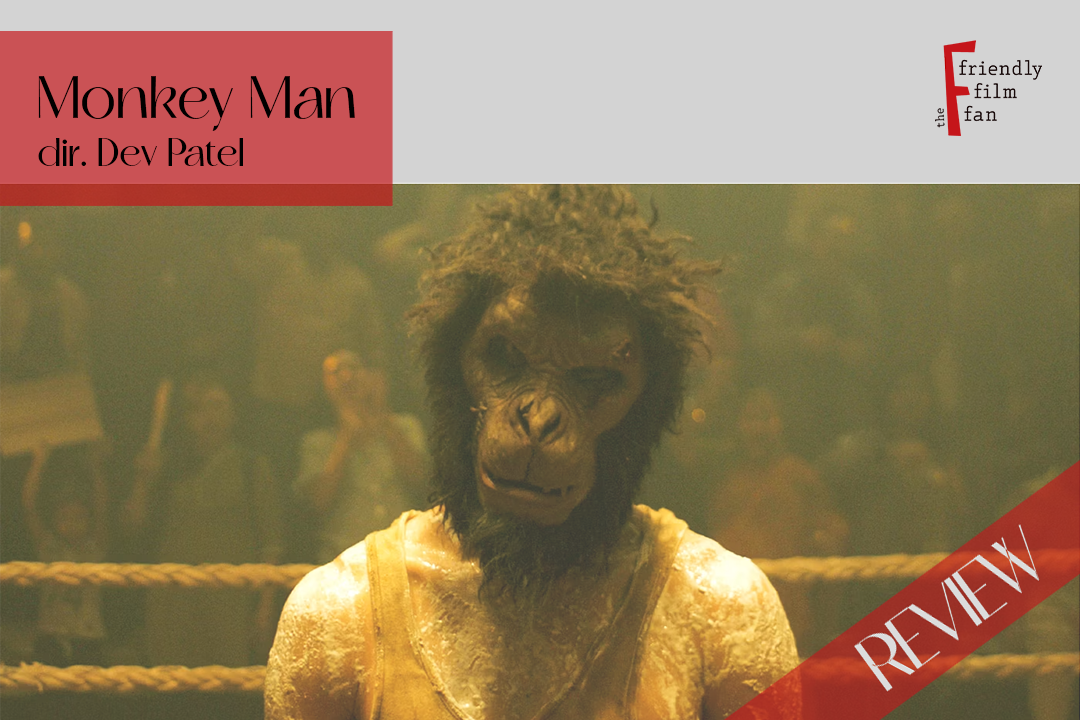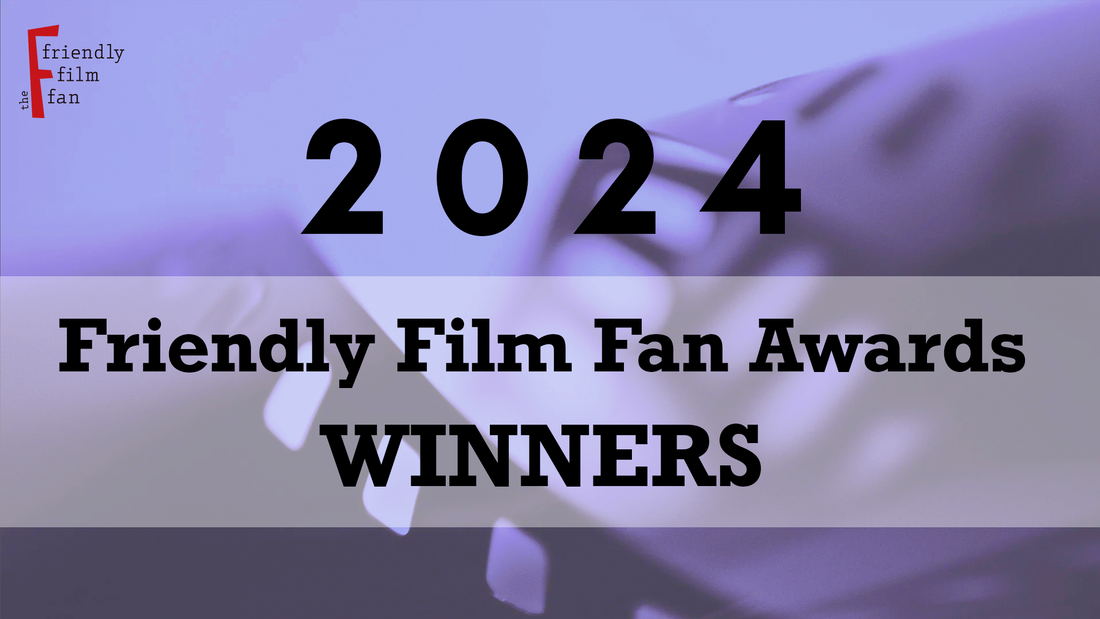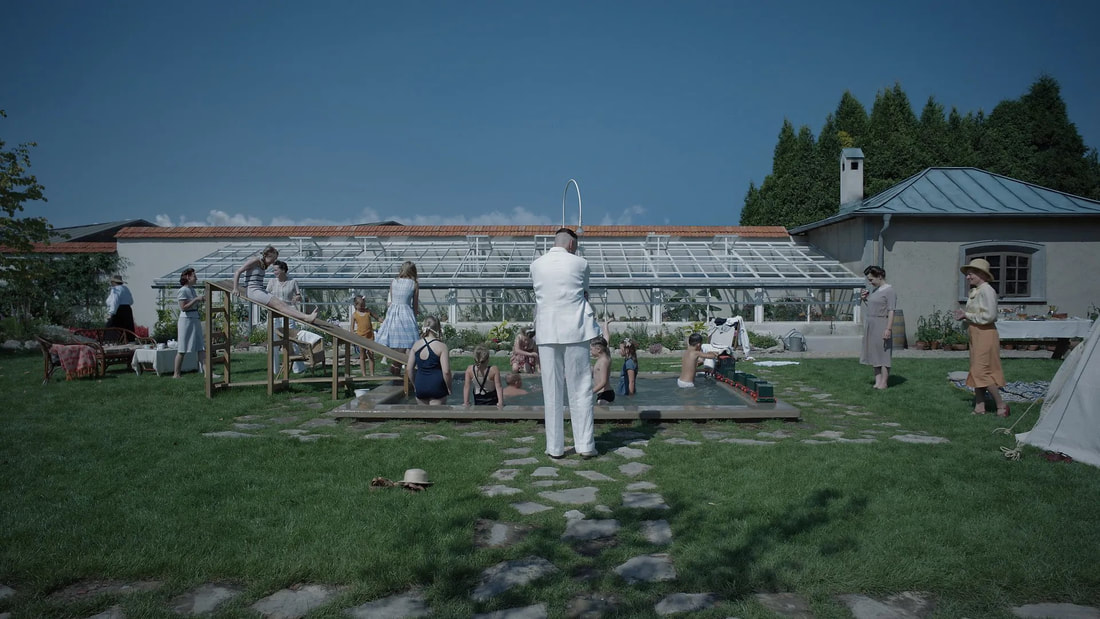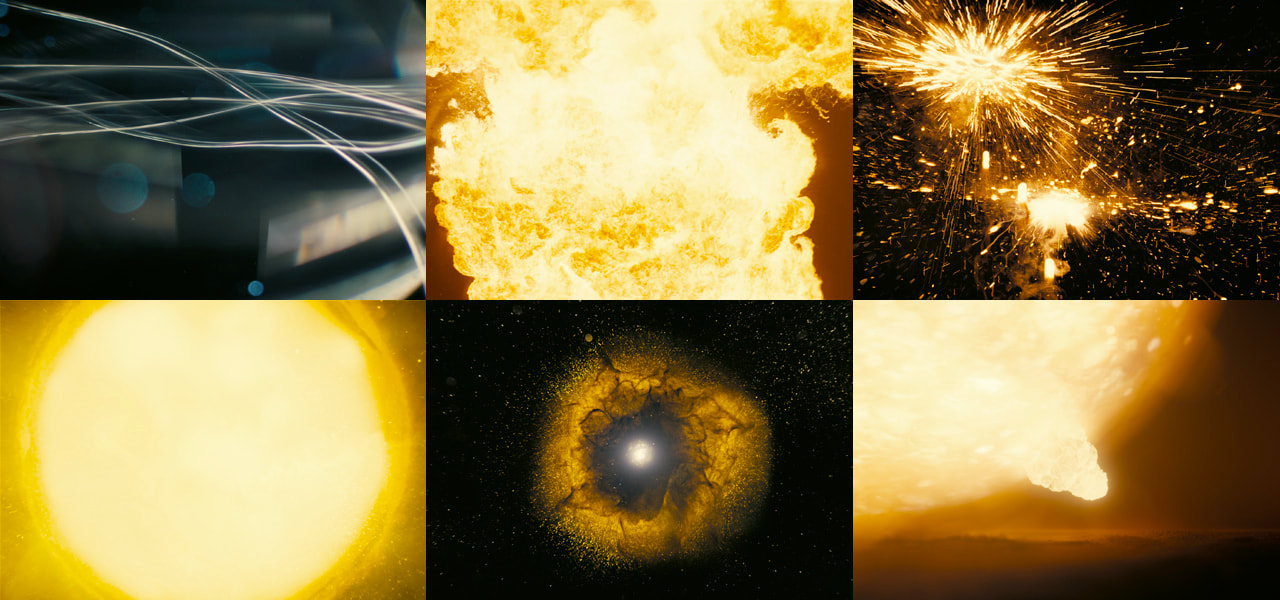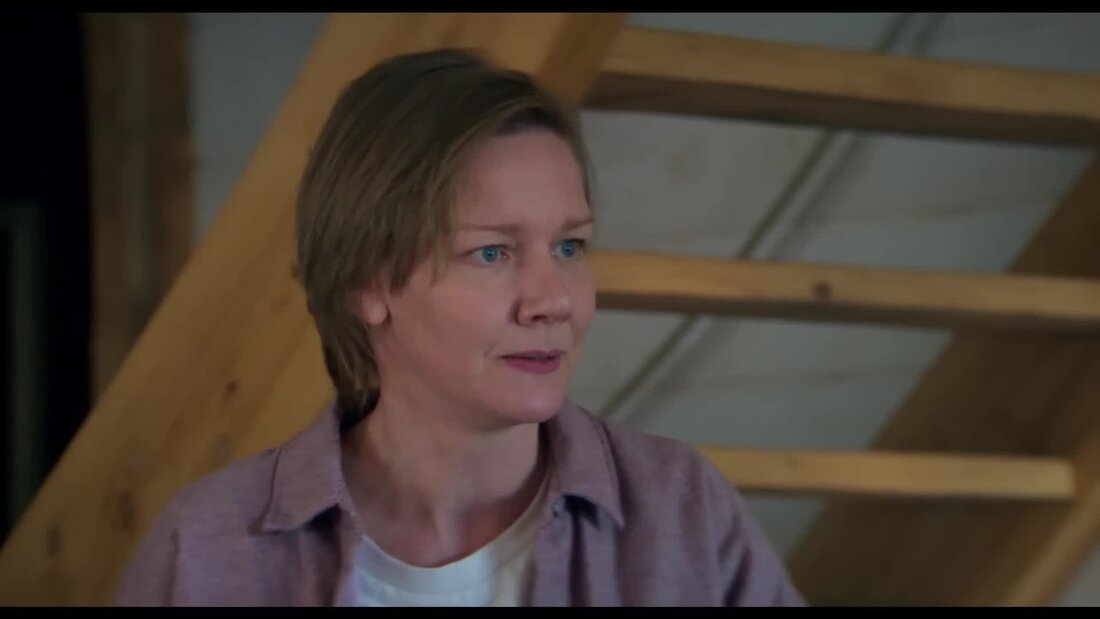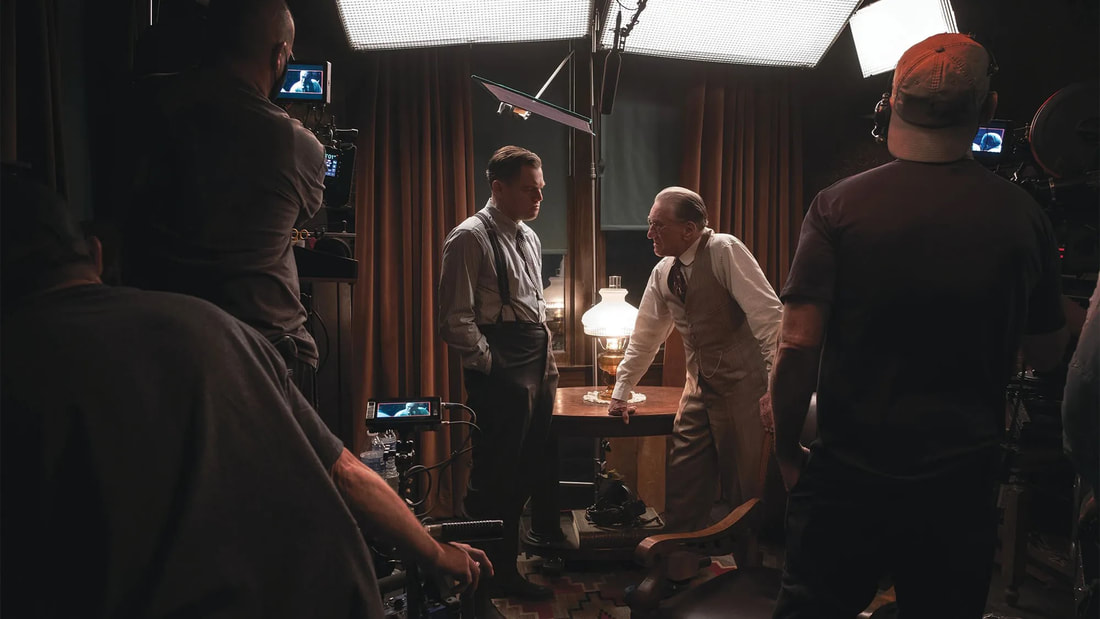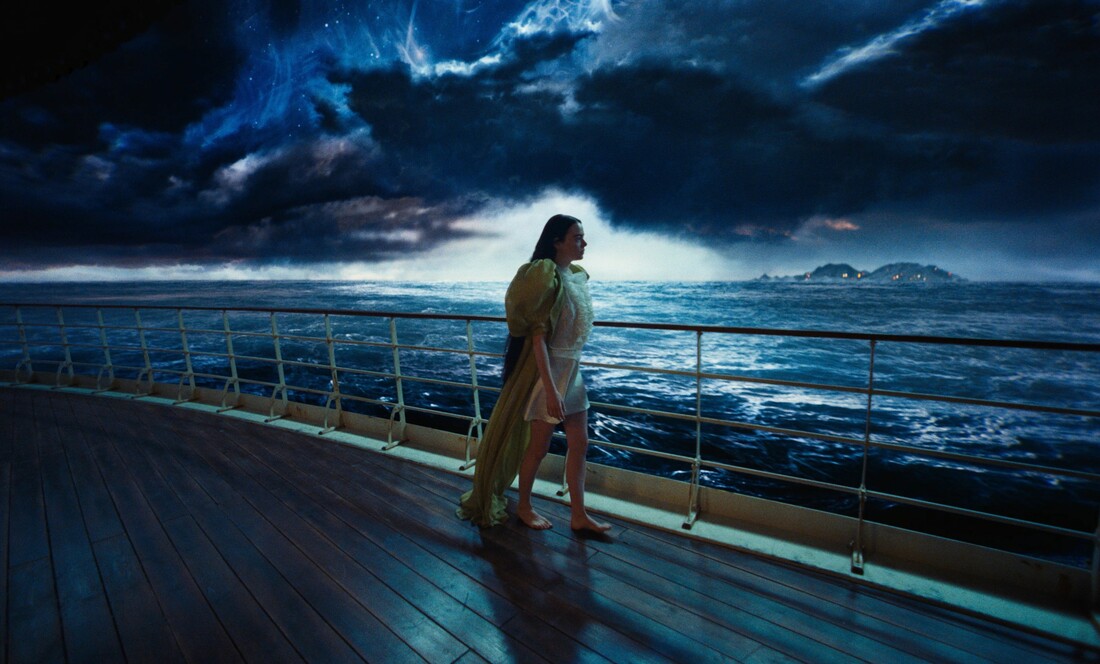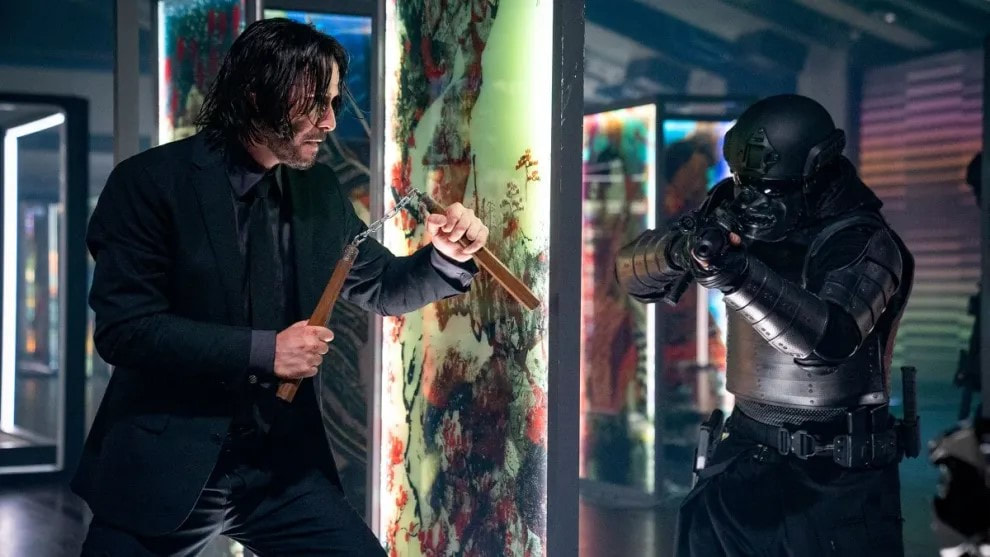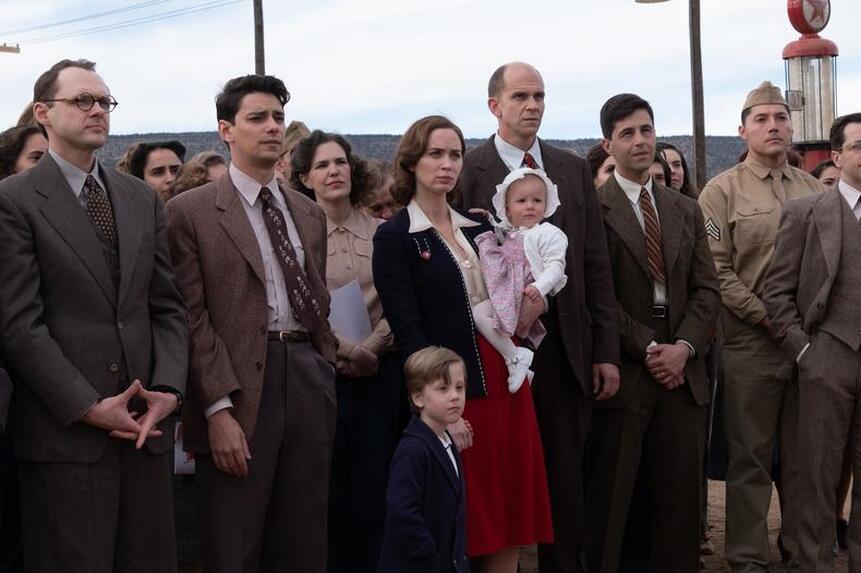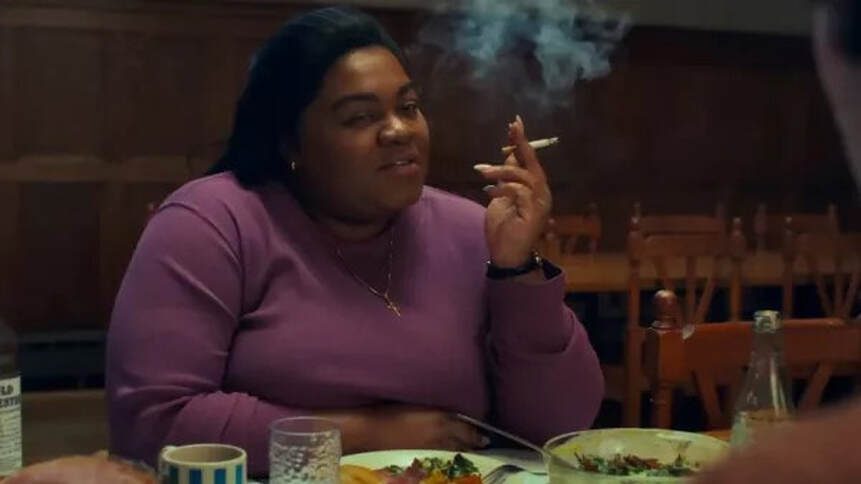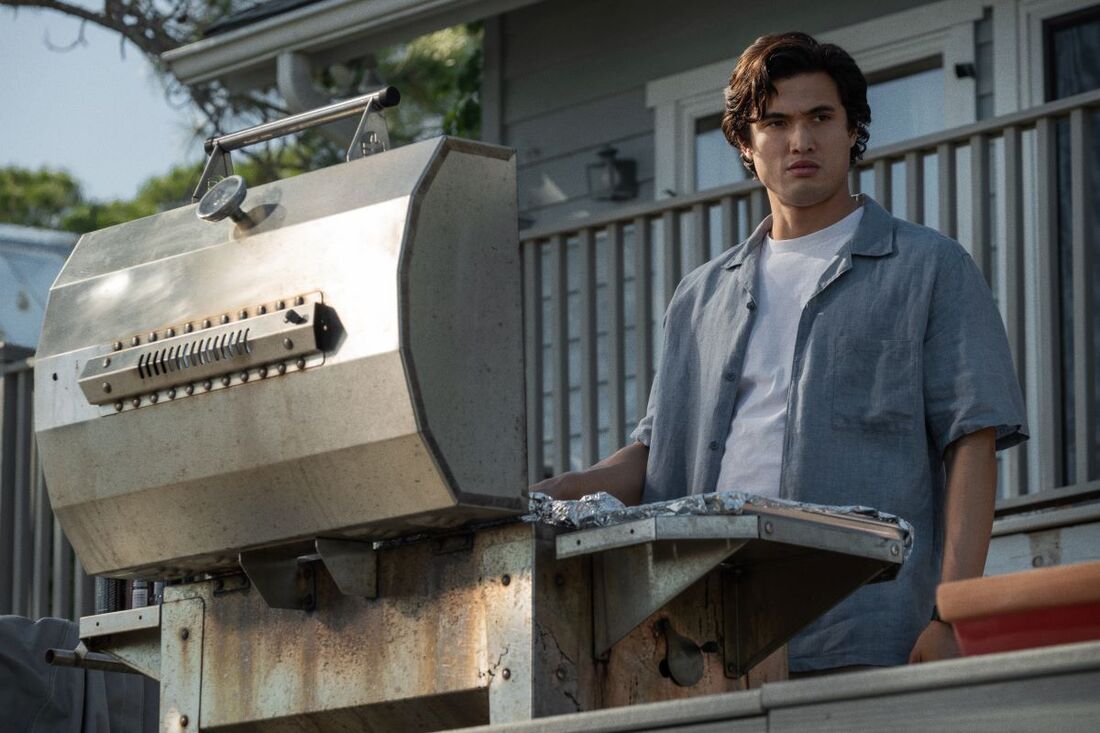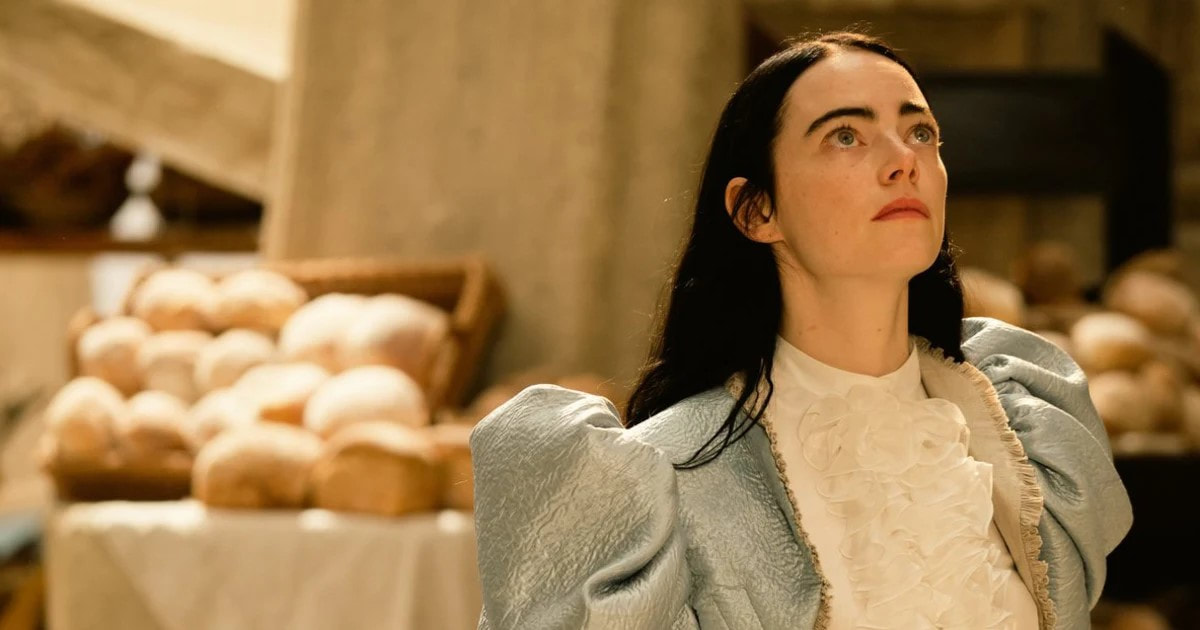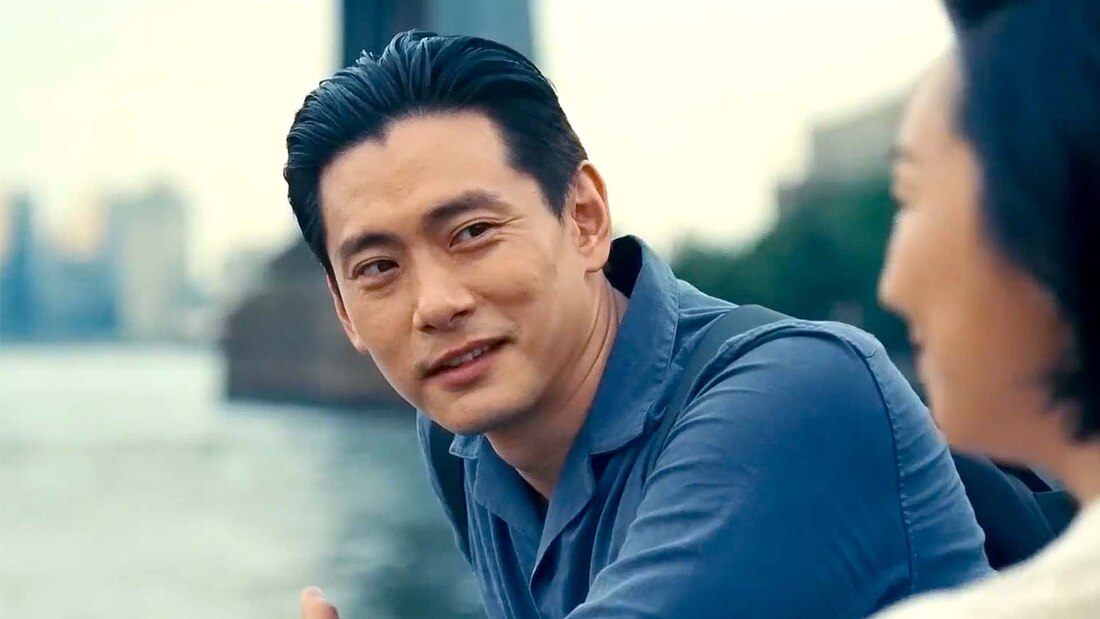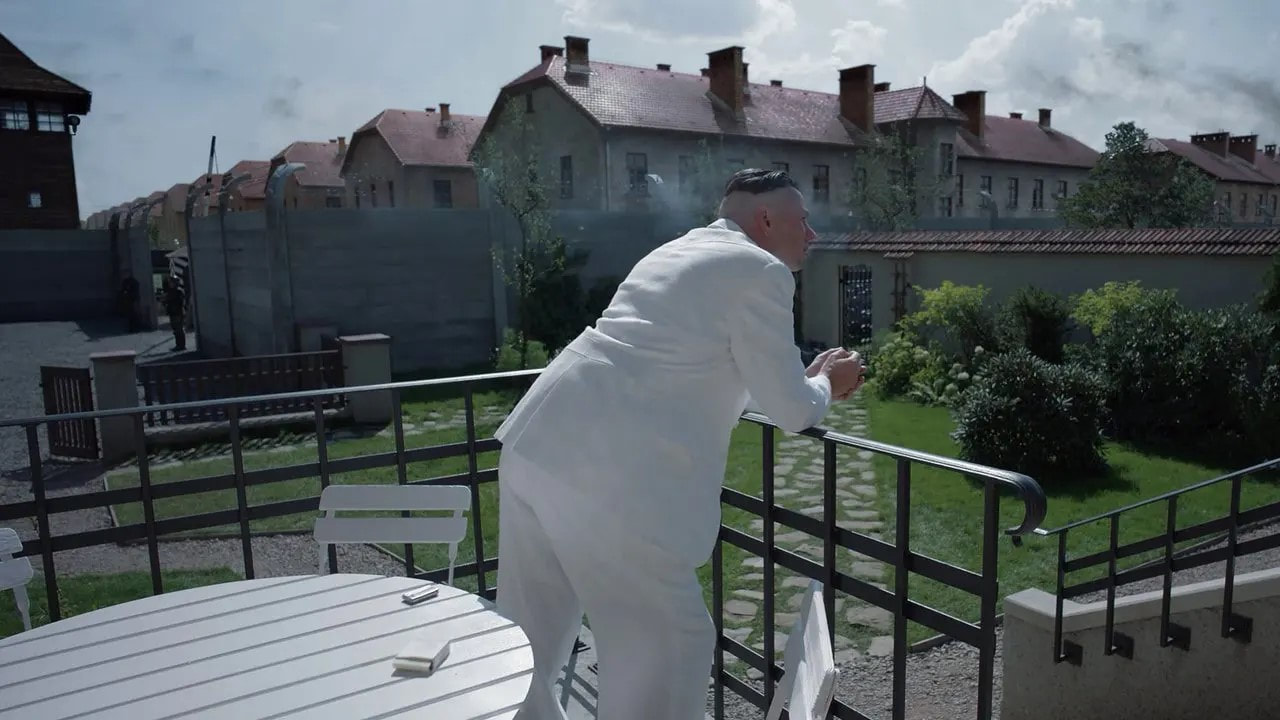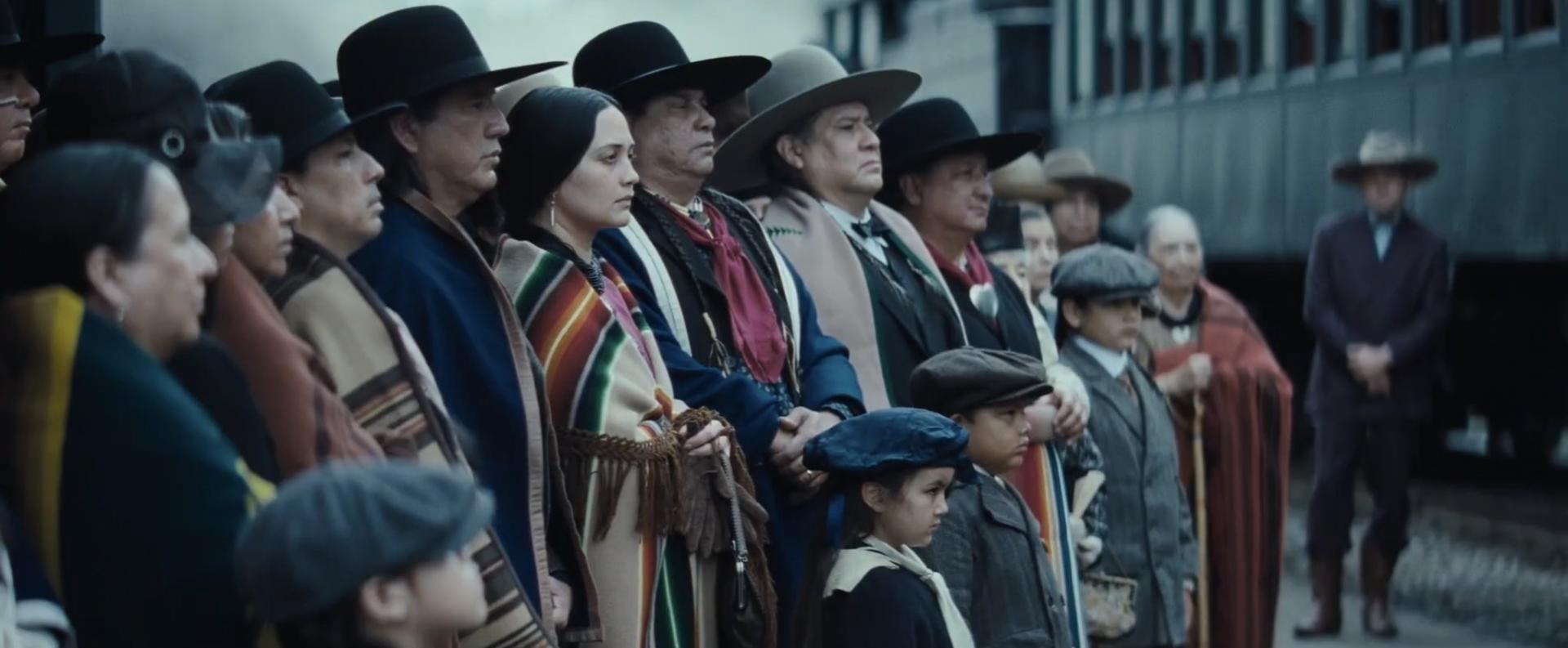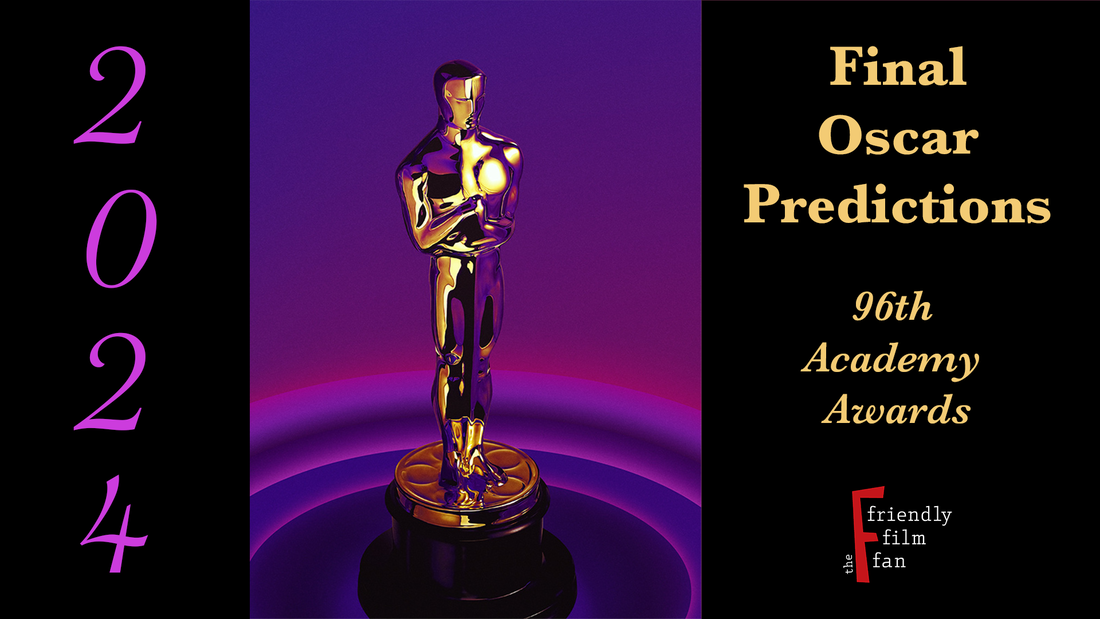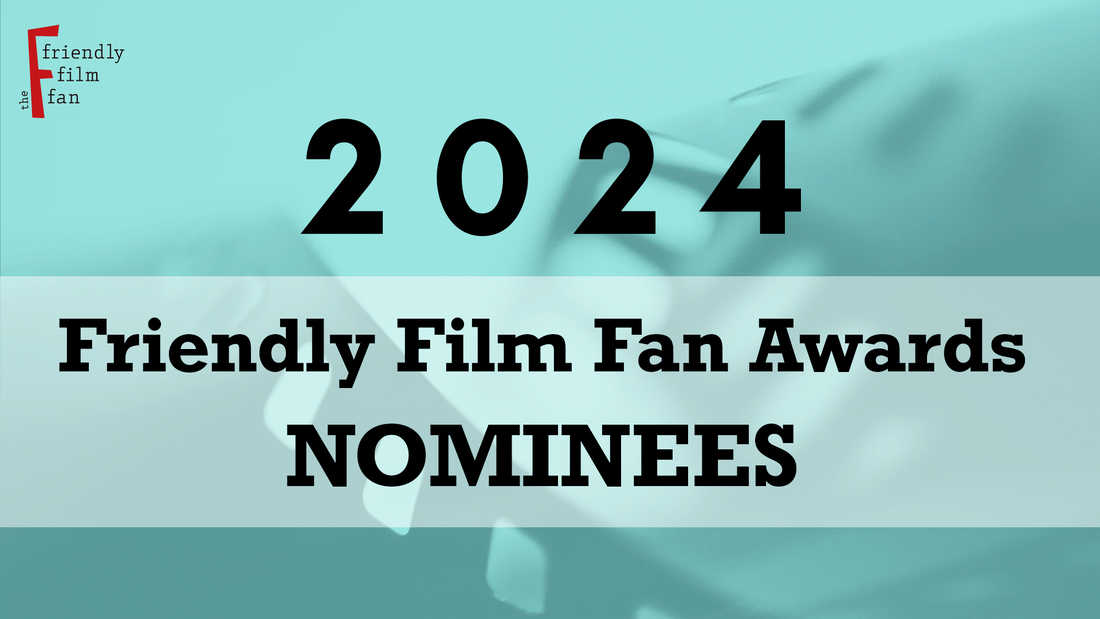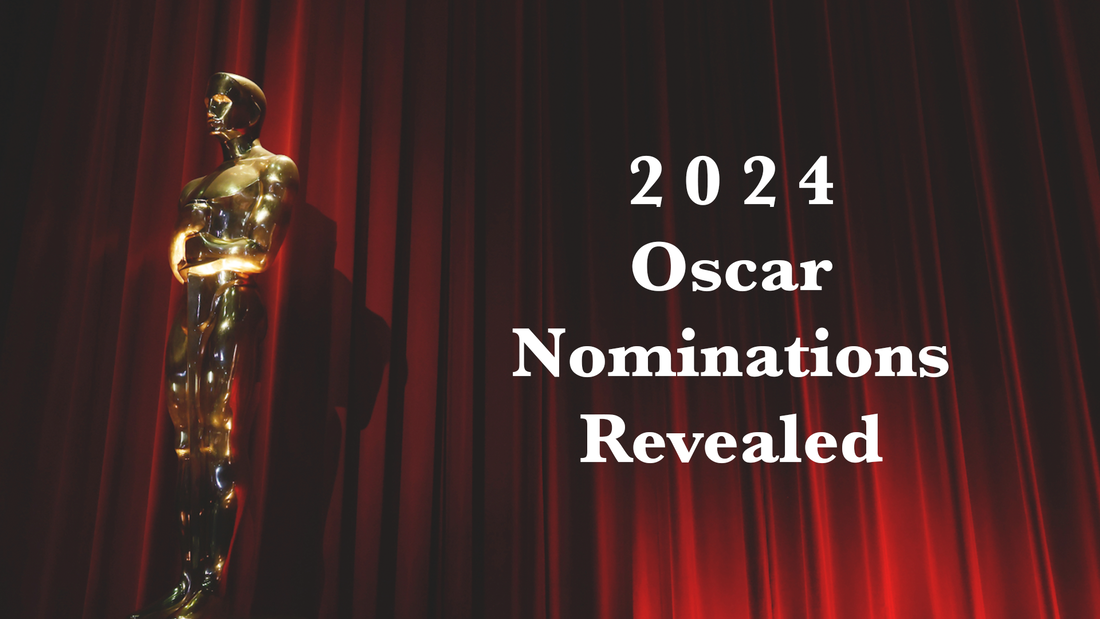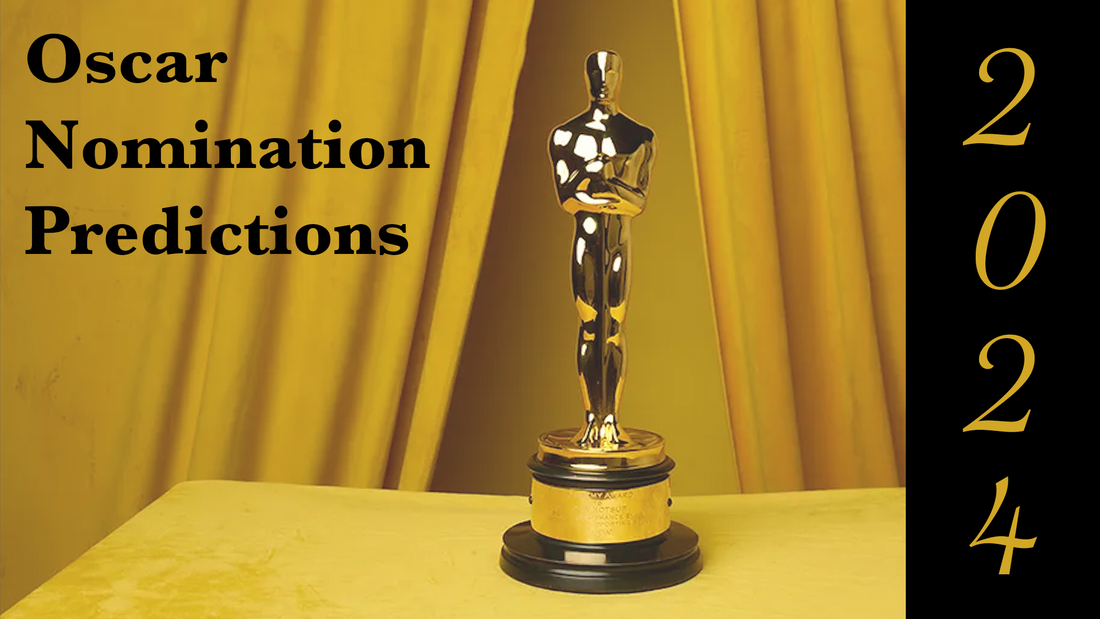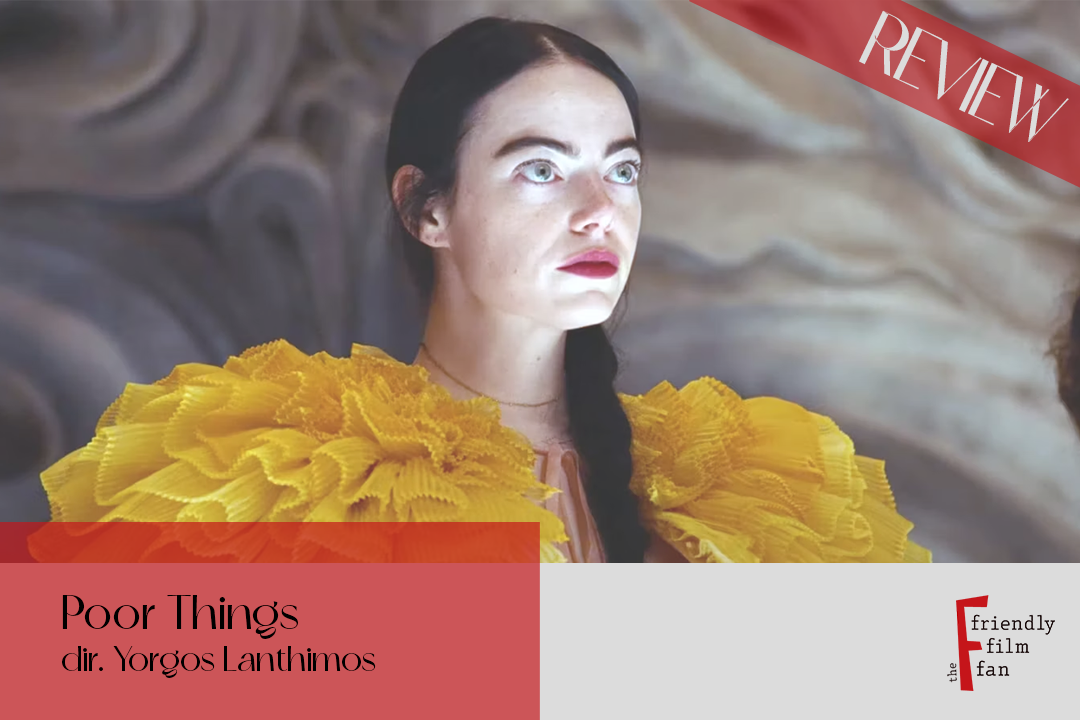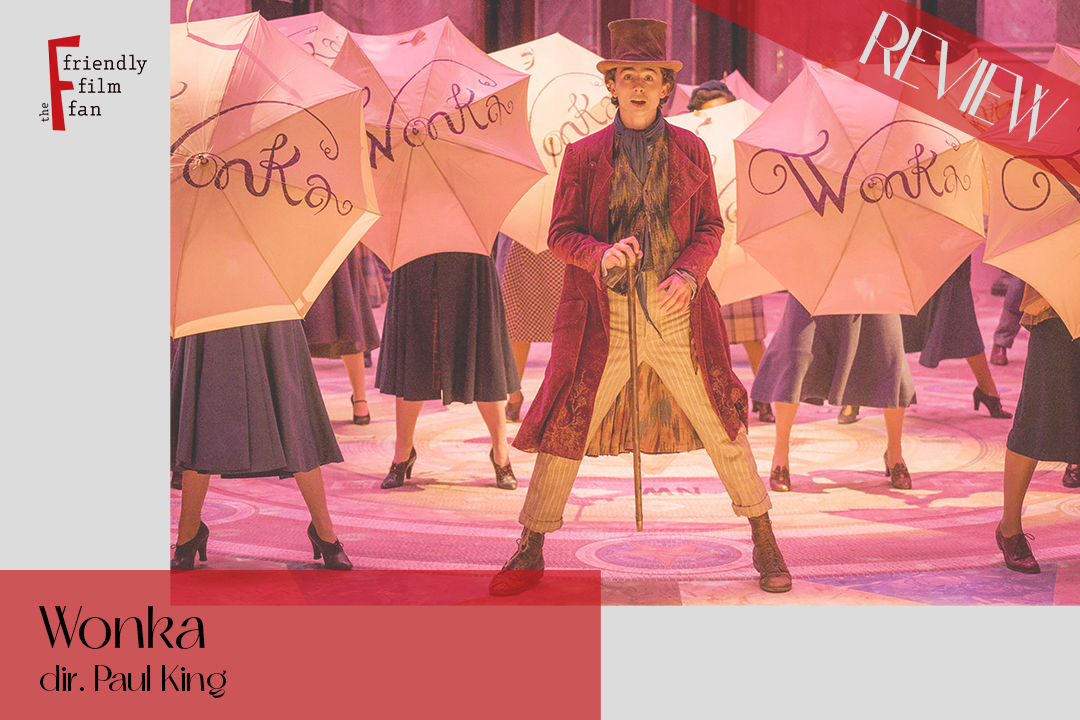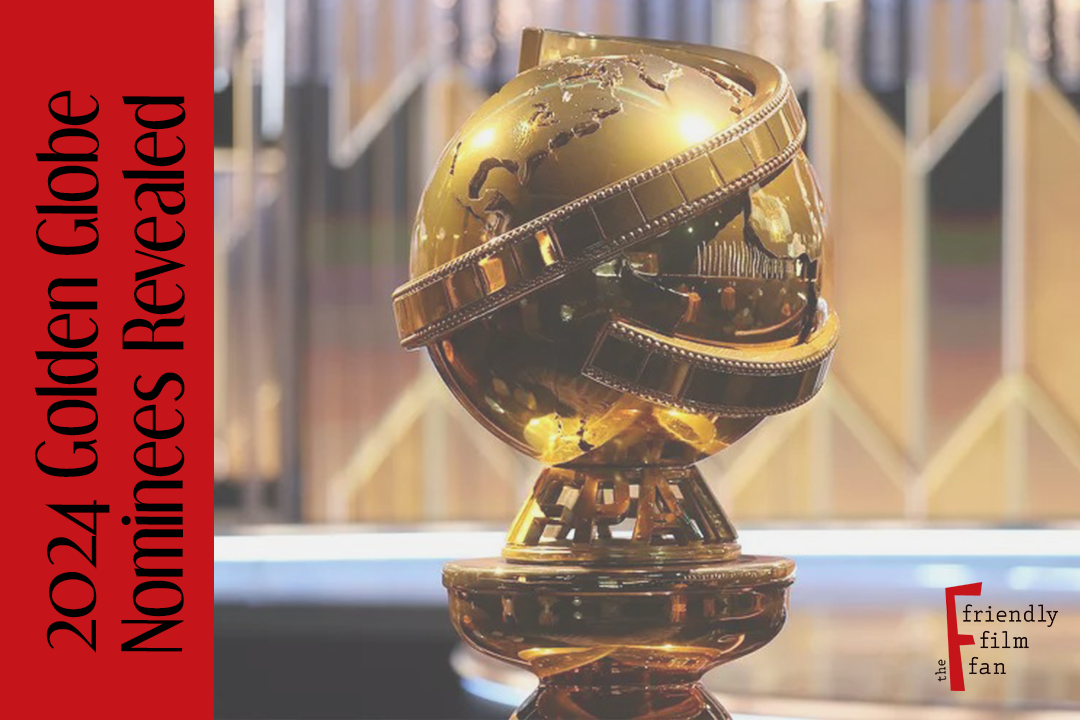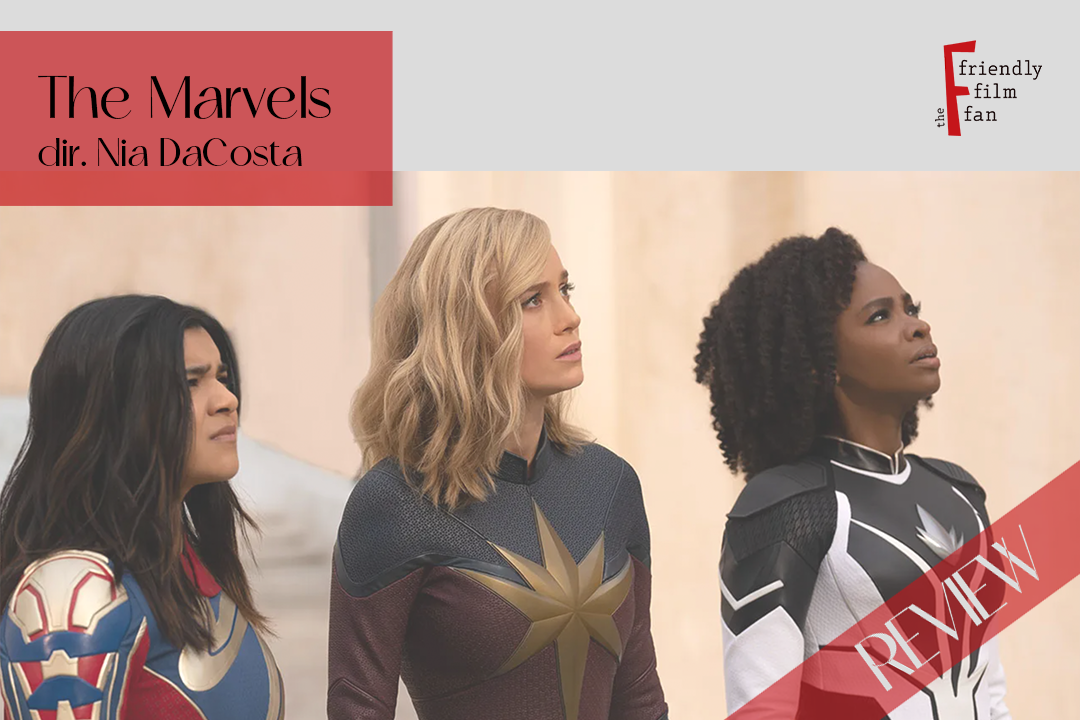|
The Friendly Film Fan Reviews the Actor’s Directorial Debut. Dev Patel has always been one of the most interesting people to follow in Hollywood. While following his breakout film performance in Danny Boyle’s Best Picture-winning Slumdog Millionaire to his latest work alongside Benedict Cumberbatch in the Wes Anderson short films Poison and The Wonderful Story of Henry Sugar has not always yielded perfect results, there has always been something about him that draws the viewer in regardless of each film’s varying qualities. Don’t get me wrong, no one escaped The Last Airbender unscathed, but beyond that, there’s almost nothing Patel has done that I haven’t either watched or at least wanted to watch. He's come a significantly long way since starring in Skins back in 2007, and there’s been a lot to celebrate in that time: Lion, The Personal History of David Copperfield (a grossly underrated movie, in my opinion), and The Green Knight all speak to Patel’s immense talent in front of the camera. But acting and directing are two very different beasts. Now, Patel finds himself behind the lens for his feature directorial debut, which he also co-wrote and stars in. Originally intended as a Netflix release before producer Jordan Peele bought it from the company to put it in theaters with Monkeypaw Productions (a bit on the nose there, eh Mr. Peele?), Monkey Man follows Kid (Dev Patel) as he seeks revenge on those who killed his mother and burned his childhood village to the ground. Along the way he encounters friends, foes, and a whole host of bodies to hit the floor with as he works his way toward completing his mission. What he doesn’t know is just how many corrupt people are involved in some of India’s political circles…or just how high up those circles go. One of the greatest compliments anyone can give a debut filmmaker is that they want to see what this person does next, and after seeing this movie, I’m more than ready for whatever Dev Patel wants to do next. While the story itself is rather plain and the film’s structure does little to lift it out of that plainness, Monkey Man still pulses with energy and passion in every step. Setting Kid’s journey as both parallel and homage to the tales of Hanuman may seem like an obvious choice at first glance, but it’s in how the film forges its own path outside of that parallel that makes it stand apart from other action fare like it. That said, the first half of the film does feel as though it’s unsure of just how to forge ahead, which one can feel when watching how often the editing jumps around from beat to beat without much of a breath or even a bridge between plot points. Long stretches go by without much in the way of action, and when the action does happen – again, first half only – the shaky-cam effect only serves to obscure the talent and work put into those sequences. Extreme close-ups in action sequences can be big moments, but only if used sparingly. Perhaps the point of the film being made in this way is to reflect the character’s initial mental state – fractured, on edge, etc. – whereas later he becomes more confident in his ability, so the film eases up on the viewer; that said, there are other methods of demonstrating that sort of blind rage that don’t involve shaking the camera that much or that often. Where the film truly excels is in its second half, which I won’t spoil except to say that the camerawork sees a significant improvement in establishing and wide shots, and the editing doesn’t feel so scattered as it did in the film’s early stages. If there’s one thing Monkey Man has going for it that few other directorial debuts – especially in the action space – could match, it’s style and personality. While comparisons to other films like John Wick are simply inevitable now whenever a new, highly-choreographed action film is set to be released (and this one drops that franchise by name), there’s no denying that this movie is still very much its own thing. From the costumes to the narrative to the filmmaking itself, this film has an identity it doesn’t share with almost anything else, and one can tell that real blood, sweat, and tears (plus a few broken bones, to boot) were put into making this thing the best it could be with what they had to work with. You can feel the passion for this film just oozing off the screen with every scene. The very notion that the film almost lost funding at one point makes even the existence of this film an outright miracle, but Patel’s hard work to haul it over the finish line himself is up there in every frame (especially in the film’s occasionally frantic but always impressively-designed action sequences), and that in itself is a beautiful thing to witness. What I hope for this film, and films like it, is that audiences will buy into and take a chance on them the way Jordan Peele took a chance on Dev Patel as a filmmaker. Mid-budget flicks like this are all too rare already, and while Monkey Man may be a simple tale of revenge without much in the way of narrative innovation, what it lacks in structural originality, it more than makes up for in sheer verve. Dev Patel’s efforts to get this movie made are all right up there on screen, and that effort was clearly a concentrated one given how the film’s identity is able to (mostly) spring free of comparisons to others that inspired it. The performances are fun (who doesn’t love a good Sharlto Copley appearance), the action is kinetic and occasionally brutal, the comedy mostly hits despite how little of it there actually is, and it’s very clear Dev Patel has as much of a future behind the camera as he’s had a past in front of it. I can’t wait to see what he does next. I’m giving “Monkey Man” a 7.8/10
- The Friendly Film Fan
0 Comments
The winners are finally decided. Ladies and gentlemen, and those who identify as both or neither, the time has finally arrived! Now that the Oscars are over, it’s time to get to the awards you’ve all actually been waiting for, as we officially announce the recipients for the 2024 Friendly Film Fan Awards! 2023 was a spectacular year for movies, from bombastic, action-heavy blockbusters to intimately still indies and everywhere in between. Filmmaking rose to new heights, design work was re-contextualized and innovated upon, and performances and scripts reached some of their greatest potential to date. It all comes to a head here, as we head into our first category of this year’s FFFA contenders, beginning with… BEST SOUND DESIGN The Nominees:
To put it lightly, Sound was a stacked category this year; The Creator’s bridge sequence remains one of the year’s most underrated in this respect, both Oppenheimer and Maestro’s best scenes featured sound that – while undoubtedly loud – was as crisp and clear as could be, and Spider-Man: Across the Spider-Verse’s soundscape not only matched but often informed the look and movement of much of its stunning animation. However, there was one film that came out clear ahead of the others, with a soundscape that not only told a deeply unsettling story just beyond the frame, but stuck with us long after the credits rolled and became in many ways the film’s defining element: Jonathan Glazer’s masterfully-told The Zone of Interest. A family drama about an SS Officer in Nazi-era Germany working at the Auschwitz concentration camp, The Zone of Interest uses its sound not to accentuate what’s happening on screen, but to constantly remind the viewer of the horror of what’s occurring off of it; the juxtaposition of its slice-of-life story against the lives those slices are taken out of renders the viewer not simply motionless but sickened, entirely dysregulated by way of the unyielding churns, screams, gunfire, and cries of a people’s erasure from life itself. Whereas the other nominees’ sound designs are one of several elements used in crafting their films’ identities, in many ways sound itself is Zone of Interest’s entire identity. There simply is no finer example of its use in film this past year. BEST VISUAL EFFECTS The Nominees:
When it comes to visual effects, it’s important to remember that “visual” is the key term, not “computer-generated.” For all their wonderful work this year, from the miraculous Ginza attack sequence in the now Oscar-winning Godzilla Minus One to Mission: Impossible’s stellar blend of both practical and CG effects, there was no film for which the visual effects were crafted – or employed – quite like Oppenheimer. Though entirely devoid of CGI, the interstitial and often dreamlike effects which constantly interrupt the frame remain nonetheless the best-looking of any film released last year, supporting their titular character’s fractured and frantic state of mind at every possible juncture in the story. The ways in which many of these effects were achieved is not simply worthy of recognition with a nomination here, but in our view, far and away the clear choice as the ultimate winner in these Friendly Film Fan Awards. BEST SCREENPLAY The Nominees:
Narrowing down the field of exceptional screenplays this year down to a mere five nominees across both the adapted and original spectrum was in itself a herculean task which took us multiple days to finalize, so you can imagine the stress levels involved in choosing a winner from these five unbelievable scripts. Ultimately, though, we elected to go the same route the Academy did; while we absolutely loved the delicacy of Past Lives and all it left unsaid, the screenplay for Anatomy of a Fall remains a completely undeniable tour-de-force, an overtly brilliant examination of how legal proceedings uncover so much more than simply who is or is not guilty in the eyes of the law. Whether one believes the decision made at the end of the film or otherwise is entirely irrelevant to the journey of Sandra Hüller’s character, to the unraveling of her relationship to her partner, how it infects everything around it, and how their mutual behaviors are seen by their son (played fantastically by Milo Machado Graner). It’s a magnificent achievement in screenwriting, and is – at least in our eyes – the correct choice for Best Screenplay. BEST SCORE The Nominees:
There was a lot of great work in film compositions this past year, some of which the Oscars forgot to include in their own nominations (looking at you, snubbers of Across the Spider-Verse), but if you’ve followed us for any significant length of time, you’re well aware that one score came out far ahead of the rest of the rest of the pack, which is why we’re more than proud to fall in step with the Academy with our choice of winner, Ludwig Göransson, for his incredible work on Oppenheimer. Simultaneously classical and timely, urgent and inevitable, Oppenheimer’s score is not only the best example of the use of music in film over the past year, but one of the best compositions of music committed to film in the past several. Göransson has quickly become one of the finest working musicians in any business, and his work here stands as a testament to both his immense talent and his constant growth. We can’t wait to hear what he has planned for us next. Congratulations, Ludwig, on your historic win here today. BEST CHARACTER DESIGN The Nominees:
When it comes to the design elements of any given film from the past year, it has been a two-horse race all the way down the line, with Poor Things ultimately taking the Academy for a ride in Production Design, Costume Design, and Makeup & Hairstyling one after the other after the other. While we absolutely loved all the design work in Poor Things, however, our Best Character Design award – a combination of those latter two Oscars categories for the sake of efficiency and nominee pool expansion – goes to Barbie, which not only brough the titular dolls to life in vibrant color and unmistakable definition, but often informed where characters found themselves emotionally at different points throughout the film; plus, the looks are just plain fun! Barbie was a design juggernaut this year, among other things, and we couldn’t be happier to recognize all the incredible work on display in it, which also leads us to… BEST PRODUCTION DESIGN The Nominees:
Another white-knuckle race between Barbie and Poor Things in which the latter ultimately came out on top in the Oscar race, Best Production Design was yet another stacked category this year, from the entirely created visual worlds of Poor Things, to the flawless realizations of life-size fantasy worlds in our ultimate winner, Barbie. We’ve all heard the story about the global pink paint shortage cause by Barbie’s immaculately-rendered Barbieland, but what we’re more interested in here is actually the construction and architecture of the world itself, rather than simply the colors used. Yes, Barbie has previously-realized visual palettes to draw from whereas Poor Things does not, but it’s in how entire sets were constructed as tangible, life-size versions of those palettes that we find the magic of Barbieland, set against large-scale matte paintings that both inform and accentuate the fantasy elements present in the film. Barbie is more than worthy of this award, and we’re proud to be the ones to hand it to the entire Production Design team. BEST FILM EDITING The Nominees:
When it comes to film editing (not to sound like a broken record), there were a lot of pretty stellar examples this year, from The Zone of Interest’s decisions of what not to include, to May December’s “not enough hot dogs” cut, to the Academy’s choice of winner, Jennifer Lame’s frantic-yet-clear and unmistakably masterful edit of Oppenheimer. However, when it comes to editing, more than just speed and organization of fractured narratives matters – pacing matters, and no film is a finer example of prioritizing pacing over speed than Killers of the Flower Moon, edited by one of the best to ever do it, Thelma Schoonmaker. Killers’ edit doesn’t exactly make the film feel shorter, but that’s entirely by design; we’re meant to sit in the discomfort, in the dread, in the dismayed horror of what’s happening to the Osage nation at the hands of our protagonists. And when there is a lull (though there’s never a drag), we’re meant to feel that to, as though we need this to be over as much as the Osage do. Schoonmaker’s edit moves at the clip it needs to, always pushing forward but never without the push of the characters within it; it moves when they do, and for that reason plus many others, it’s our choice for the Best Film Editing of 2023. BEST CINEMATOGRAPHY The Nominees:
Neon-soaked or black-and-white, this year’s cinematography nominees produced some of the most iconic and stunning looks in film history, with purposeful camerawork which highlighted the immense power of many of their subjects by placing at that power’s center those helpless in the shadow of it. However, gorgeous images notwithstanding, cinematography is about more than just how the frame looks on the screen; it’s also about whether or not the look feels fitted to the story it’s in, how the camera’s movement is both informed by the world and in turn informs how the characters are seen within that world, which is why in our humble opinion, no nominee this year quite so deserves this award as Robbie Ryan for his brilliant work in Yorgos Lanthimos’ Poor Things. The cinematography in Poor Things speaks not simply to the innovation required to capture some of these frames (a 16mm lens on a wide-angle camera? Who does that?) but the inspired choices in movement and what the frame is able to capture because of it. Almost every time Bella is with Godwin Baxter and Max McCandles, the shots are static, still, not ugly but lacking in fervor, whereas when she is driving the story out in the world, the movement is fluid and full of life. These choices reflect Robbie Ryan’s skill and his attention to detail in Poor Things’ storytelling, which is why his cinematography is our choice for this year’s Friendly Film Fan award. BEST STUNT ENSEMBLE The Nominees:
If and when the Academy finally does recognize stunt work with a real Oscar rather than a half-hearted montage clearly intended to advertise the presenters’ upcoming film, there will need to be a reckoning (a dead one, perhaps) with the decades of stunt work they have continuously elected not to award, even as they are introducing a clearly politically-motivated “Best Casting” award at next year’s ceremony since most of the higher-ups in the Academy at the moment are – you guessed it – casting directors. All that said, while the specter of Tom Cruise looms large over the entire stunt world for his continuously dangerous escalation of Mission: Impossible’s defining feature, this year’s award goes to another action franchise which has become perhaps an even bigger name in the stunt world over the last decade: John Wick. John Wick: Chapter 4 is chock-full of some of the best stunt work in the series to date, and whether or not one finds some of its non-stop sequences overwrought or occasionally too silly even for this franchise, to watch them play out is still undeniably impressive. From the Dragon’s Breath shootout to the staircase fall to a nightclub fight up there with the best ever committed to screen, Chapter 4’s stunt ensemble is without question one of the best in the business, and more than deserves this award. BEST ENSEMBLE The Nominees:
There were many acting ensembles over the past year without which their films could not have risen to the level they did, but sometimes the bench is just too deep for other nominees to overcome; such is the case with Oppenheimer, which packs some of the best character actors of their generation – including previous Oscar winners – into single-scene bit parts simply due to higher-volume roles already filled by other high-level talents working at the top of their game. From Cillian Murphy to Robert Downey Jr. to Matt Damon and Emily Blunt in high-profile parts to actors like Josh Hartnett, Kenneth Branagh, David Krumholtz, Florence Pugh, Alden Ehrenreich and Benny Safdie in more supporting roles to Casey Affleck, Kenneth Branagh, Rami Malek, Alex Wolff and even goddamn Gary Oldman for no more than five to ten minutes of screen-time each, Oppenheimer possesses one of the all-time great ensembles in the history of the term, and for us here at The Friendly Film Fan, there was simply no other choice but to award it Best Ensemble. BEST SUPPORTING ACTRESS The Nominees:
Every great supporting performance by an actress this year was full of triumph, heartache, or often a mix of both brokered by either a sense of unbound piece or unresolvable brokenness. Both grief and closure rested upon all these women’s shoulders, some of whom even became the very foundations of the films in which they played a part, even if they weren’t the main characters. From Maura Tierney to Rachel McAdams, each of these performances stood out amongst the best the year had to offer…but the clean sweep is now complete as the winner of Best Supporting Actress, which she has been all season long, is Da’Vine Joy Randolph. Randolph’s work in The Holdovers grounds the film from its other two primary characters’ more absurd antics, providing the soul of the narrative and unerringly driving home the themes of found family and closure over deep-seated grief, even if that closure is not entirely completable. It’s a performance that comes at just the right time for an actress who’s only at the beginning of what’s sure to be a long and fruitful career of exceptional work, and while we don’t like to think of ourselves as an “it’s time” awards body, it is the right time – now – for her to receive her first of what very well might be many Friendly Film Fan awards wins. BEST SUPPORTING ACTOR The Nominees:
While there is no denying the raw yet underplayed power of Robert Downey Jr., the sheer charisma of Ryan Gosling, the devious bastardity of Robert De Niro, or the devastating vulnerability of Milo Machado Graner, there was one more performance which for us cemented its giver not simply as a talent we didn’t expect, but one we had severely underestimated, which is why our Best Supporting Actor winner is Charles Melton for his incredible performance in Todd Hayes’ May December. Melton’s performance is filled with an innocence of self that’s fully aware of how violated that innocence has become, just how lost it is in the scramble for its own resurrection which can never occur. It’s a devastating turn from an actor no one realized was capable of such enormous depth – at least not at this level – and it took us completely by storm. Charles Melton, we will never again underestimate what you are capable of. BEST ACTRESS The Nominees:
As much as we love every lead actress performance nominated here this year, plus several others there simply was not room to nominate, we can only be ourselves, and declare along with the Academy that yeah, there just wasn’t a better performance this year than Emma Stone’s career-best work in Poor Things. There may be other, more historically significant performances, or even more palatable performances in many ways, but from her physical movement in an absurdist dance number to her dialect to her decision on when to move and when not to, Emma Stone’s performance was something truly extraordinary, something new, something we’ve never seen anyone do before. From minute one, you can track her development as a character through her eyes, her face, and how she moves, and Stone never once loses the audience or makes it unclear exactly what stage of personal growth Bella Baxter finds herself in. It’s truly an astonishing turn from an actress who’s always been known to be, but now in undeniably and entirely, fearless. Well done, Emma Stone; you now have not only two Oscars, but two Friendly Film Fan Awards! BEST ACTOR The Nominees:
Most Oscar-winning performances, with some limited exceptions, are loud, boisterous; they call attention to themselves as the audience is sucked into the gravity of the actor giving it everything they’ve got – they’re also, often, not unworthy as many would have you believe. Were it not for the sheer power of quiet in many of this year’s nominees, Bradley Cooper could be walking away with this award, and yet, the quiet eyes of Teo Yoo in Past Lives speak so much love into the film that goes entirely unsaid; we’d be fools not to hand him this award. Yoo’s performance is so deeply felt so as to almost be unnoticeable, so subtle as to be invisible – it’s a performance full of yearning, longing, full of grief over what was lost and acceptance that even though he can never get it back, what is given will have to be enough, and he accepts making peace with that notion. The ending of Past Lives may rest on Greta Lee’s incredible breakdown, but its middle and third act are largely carried by the shoulders of Teo Yoo, and we’re proud to hand him the Friendly Film Fan Award for Best Actor. BEST DIRECTOR The Nominees:
Sometimes great direction is all about not getting in the way, about letting what’s in the frame dictate where the story goes and the feeling it gives an audience. But other times, such as in this case, the best direction we saw all of last year was all about control: understanding not only what to put in the frame, but what to never put in it, leaving one’s mark on celluloid so unmistakably that no one can question what it is you have to say, making every step along the way with absolute conviction so that none fall falsely along the way. This is what makes Jonathan Glazer’s direction of The Zone of Interest so undeniably powerful. To never travel inside the walls, to always present atrocity as slice-of-life-adjacent is to condemn the world for their own complicity, for their silence in the face of absolute horror. If these things are allowed to continue so casually in one man’s backyard, who’s to say that such apathy can’t extend to neighboring countries or the rest of the way across the globe? Glazer’s presentation of Zone of Interest presents the depths of human depravity, of just how twisted and untethered the soul can become, and leaves it up to his audience to do the examinations of such evil themselves. No matter how we feel individually, we are all capable of collective atrocities, and our mere silence, our desire to shut it out so as not to feel its sickening infection of comfort in the face of unspeakable evil, might be the worst of them all. And finally, the one you’ve all been waiting for… BEST PICTURE The Nominees:
We’re fast approaching the point when Martin Scorsese will no longer be able to make movies, so for the master to offer up his own self up to this kind of scrutiny and vulnerability in filmmaking this late in his career is not simply a treat for movie fans, it’s a miracle for cinema itself. Killers of the Flower Moon may not be a perfect film; in fact, on a technical level, it might not even be the best one amongst these ten nominees. Yet, for any faults it has, it is the movie which has defined year in film for us, even more so than Barbie or Oppenheimer. Scorsese not only tells the story of the Osage Reign of Terror with grace and conviction, but confronts in the film’s ending the very idea that he’s made this story into a visual entertainment art piece at all, why on earth human beings feel it so essential to bring tragedy into an entertainment space, and why – even when we mean well – we will always fall short in telling stories that don’t belong to us. With every subsequent revisit, the film only gets better and better, and we imagine it will only age the way movies themselves do as its legacy becomes more than anyone thought it could be. It doesn’t simply possess one of the great movie endings of the last ten-to-twenty years, it is one of the master’s greatest-ever works, and we count ourselves lucky to not only have been around for its unveiling, but to name it the Best Picture of 2023. And those are your 2024 Friendly Film Fan Awards winners! What would you have picked to win from this list? Do you have your own nominations to share from last year? Let us know in the comments section below, and thanks for reading!
- The Friendly Film Fan The Friendly Film Fan Selects What Will and What Should Win at the 96th Academy Awards Well, folks, that time has finally arrived, as the Oscars are nearly upon us. After a long and winding road through strikes, delays, and production setbacks, the awards season is due to come to an end (which wouldn’t be so exhausting if the Academy would just move the Oscars back to February, but that’s another piece). As of tomorrow, the Academy will have unveiled what they voted on as the best of the best in movies in 2023, so this is the last chance we’ve got at predicting what exactly their tastes line up to be. Of course, we have our own picks in each category, whether it’s something we believe should be taking home the gold or something that should have been nominated in the first place, as well as Dark Horse candidates not enough people are worrying about and secondary guesses in more competitive races. It all comes to a head tonight, so once more, here are our predictions for the winners at the 96th Annual Academy Awards! BEST DOCUMENTARY SHORT The Nominees:
Will Win: The ABCs of Book Banning Could Steal: Nǎi Nai & Wài Pó Dark Horse: Island in Between Should Have Been Nominated: Last Song from Kabul It’s a strange thing to have the only non-publicly-screened category in the Oscar Shorts races be the most accessible of all three, and yet for Best Documentary Short, we were able to see all but two of fifteen shortlisted films (the missing two being Bear and Wings of Dust). To that end, we feel as if we’ve got a pretty good handle on this category, which makes it a bit disappointing that what is easily the weakest of the shorts – The ABCs of Book Banning – is most likely to take home the award at the end of the night. In a just world, The Last Repair Shop would walk away with this in a landslide, but we could also see an argument for the thoroughly charming Nǎi Nai & Wài Pó as well. In any case, many of the doc shorts this year were quite good, and the ones that weren’t…mostly didn’t make it this far anyway. BEST ANIMATED SHORT The Nominees:
Will Win: War Is Over! Inspired by the Music of John & Yoko Could Steal: Ninety-Five Senses Dark Horse: Our Uniform Should Have Been Nominated: N/A As we have been unable to find or view Our Uniform and War Is Over!, we are abstaining from picking a “Should Win” in this category, but in all likelihood, the win will go to the latter of these two shorts. There is a small chance that the widely-supported Ninety-Five Senses could swoop in for the win, but it seems unlikely this late in the race. Watch out for Our Uniform, though. While we were not able to view it in its entirety, the style of animation present in the trailers for it display world-class creativity in the medium, and could appeal to voters who like their animation a little more unconventionally rendered. BEST LIVE-ACTION SHORT The Nominees:
Will Win: The Wonderful Story of Henry Sugar Could Steal: Red, White and Blue Dark Horse: Knight of Fortune Should Have Been Nominated: N/A The second of the two shorts categories we were able to actually watch all the nominees for, Best Live-Action Short is stacked with really interesting and fun work (with one notable exception). The Wonderful Story of Henry Sugar has everything it needs to win the night, including the invitation to give an Oscar to the great Wes Anderson, who has bafflingly remained winless to this point. That said, we would really like this one to go to Invincible, a wonderfully-told and poignant story paying touching tribute to a life lost too soon. If anything is likely to steal Henry Sugar’s thunder, however, it would seem to be abortion drama Red, White and Blue, which is very well-told, but perhaps a bit too theme-forward in the narrative. Knight of Fortune, a surprisingly funny and touching story of a man mourning his deceased wife, could burst through in a split vote between the prior two films, but as with Ninety-Five Senses in the previous category, it seems – at best – unlikely. If by some curse The After wins, we should all answer to God; it is by far the worst in the category, and its nomination here is baffling. BEST SOUND The Nominees:
Will Win: The Zone of Interest Could Steal: Oppenheimer Dark Horse: Maestro Should Have Been Nominated: The Killer There are one or two “no guts, no glory” predictions – what we call “hope-dictions” we’re going to make this year, the first of which is in Best Sound. While it is entirely possible that Oppenheimer runs the table in nearly every nominated category, Best Sound is one we think should and ultimately will go to Jonathan Glazer’s The Zone of Interest, a film in which the sound design is not only the best in the category, but the topic of conversation surrounding the film’s overall quality. You can’t talk to someone who’s seen Zone of Interest without the sound design coming up as the thing that most strikes the viewer. That said, Oppenheimer’s sound is almost just as excellent, and it’s likely to win many of the night’s below-the-line races; this could just be one of them. While the rest of the nominees also have good to great sound design (The Creator in particular has excellent sound – think of the bridge scene), it would have been nice to see The Killer nominated in the category. BEST VISUAL EFFECTS The Nominees:
Will Win: The Creator Could Steal: Godzilla Minus One Dark Horse: Mission: Impossible – Dead Reckoning Part One Should Have Been Nominated: Spider-Man: Across the Spider-Verse This is a two-horse race if ever there was one. While many believe that Godzilla Minus One’s enormous popularity may sway most international voters (of which the Academy has added many in recent years) towards the side of the atomic lizard, The Creator has not missed a visual effects award to date, and is widely viewed by the VFX industry as revolutionary to the practice. For our money, we do think that the Academy may ultimately decide the nomination itself is enough for Minus One’s representation and instead reward The Creator in this category. Even with all of that, however, it’s a shame that the exemplary work on display in Across the Spider-Verse couldn’t break the stigma of the effects being part of an animated film. BEST ORIGNAL SCREENPLAY The Nominees:
Will Win: Arthur Harari and Justine Triet, Anatomy of a Fall Could Steal: N/A Dark Horse: David Hemingson, The Holdovers Should Have Been Nominated: N/A This seemed like The Holdovers’ award to take for a while, even while Past Lives fans (including myself) tend to posit that that screenplay is far superior. However, momentum – and not undeserved momentum at that – has seemed to swing the way of Justine Triet for her and Arthur Harari’s ace screenwriting in the excellent Anatomy of a Fall, which would be a worthy win in any year. If there were another film – apart from Past Lives – that we felt deserved more recognition, it’s May December, the screenplay for which is exceptionally witty, insightful, and biting in its more satirical elements. Frankly, May December should have been nominated in far more categories…but we’ll get to that. BEST ADAPTED SCREENPLAY The Nominees:
Will Win: Cord Jefferson, American Fiction Could Steal: Christopher Nolan, Oppenheimer Dark Horse: Jonathan Glazer, The Zone of Interest Should Have Been Nominated: Eric Roth and Martin Scorsese, Killers of the Flower Moon While it is a bummer that Killers of the Flower Moon was snubbed in this category – especially as it is a genuine feat of adaptation from its more true-crime style source material – the category itself remains exceptionally strong. The most likely winner looks to be Cord Jefferson for his debut feature, American Fiction, which would be a good win, even if we didn’t personally think some elements beyond the script ultimately landed the way the film clearly wanted them to. What we’d ultimately prefer to see, however, is a win for Christopher Nolan in this category; Oppenheimer’s screenplay – written by Nolan in the first person – is so clear regarding everything the audience and the characters are meant to be experiencing in such a tightly-wound piece that one could call it miraculous the whole thing doesn’t come off as one convoluted mess. That’s deserving of recognition, even if Barbie somewhat pulls off the same trick to a lesser extent. BEST ORIGINAL SONG The Nominees:
Will Win: “What Was I Made For?,” Barbie Could Steal: “I’m Just Ken,” Barbie Dark Horse: “It Never Went Away,” American Symphony Should Have Been Nominated/Shortlisted: “Camp Isn’t Home,” Theater Camp If this category is to continue at the Academy Awards, they’ll need to do more than just hand Diane Warren a nomination every year for an either actively bad or at least not very good movie. While I didn’t predict “It Never Went Away” being nominated (even though I really should have; I mean, c’mon, Jon Batiste’s name is right there), the presence of “The Fire Inside” in this category felt inevitable in a way that takes the fun out of what else could go here. The obvious conclusion is that one of the two Barbie songs nominated will ultimately end up winning, and either way, they’ll be worthy wins…but it should go to I’m Just Ken. The real bummer here is that the incredibly creative work on display in Theater Camp didn’t even have a shot, as none of the songs were shortlisted for the category. Still, the inclusion of “Wahzhazhe (A Song for My People),” is inspired. BEST ORIGINAL SCORE The Nominees:
Will Win: Ludwig Göransson, Oppenheimer Could Steal: N/A Dark Horse: Laura Karpman, American Fiction Should Have Been Nominated: Daniel Pemberton, Spider-Man: Across the Spider-Verse We’ve already written and spoken at length about the heinous snub of Daniel Pemberton’s score for Spider-Man: Across the Spider-Verse here, so we won’t belabor that point except to say that we have listened to all five scores, and while the first two listed in the category work well enough for their own purposes (American Fiction in particular is fairly underrated as 2023’s scores go), we’re still not sure we would have included them here over things like the aforementioned Spider-Verse or composer Joe Hisaishi’s soulful melodies for one of our other favorite animated works last year, The Boy and the Heron. All that said, as with many categories, this has been Oppenheimer’s award from the jump, as Ludwig Göransson catapults himself into the upper echelon any and all film composers working today. Of course, we love the late Robbie Robertson’s wonderful compositions for Killers of the Flower Moon, and Poor Things’ score feels as eclectic and off-kilter as the movie itself, but there’s a power behind Oppenheimer’s score that feels simply undeniable. It’s simultaneously new yet classical, always tense yet also filled with a knowing dread. There’s nothing else like it this year and there’s unlikely to be anything else like it in the years to come. It will be a well-deserved second win for Göransson (he previously won this category for Black Panther in 2018). BEST MAKEUP & HAIRSTYLING The Nominees:
Will Win: Maestro Could Steal: Poor Things Dark Horse: Society of the Snow Should Have Been Nominated: N/A One of the more tenuous categories of the evening, Best Makeup & Hairstyling seems to be poised for a one-time-only win in Maestro’s favor, but it’s not as clear a victory as some may have you believe. Poor Things, too, boasts some excellent prosthetic work and late-breaking Netflix survival hit Society of the Snow does a lot with its makeup to convey just how brutal the conditions of the Uruguayan football team become after so long on the mountain. Our one brag here – as much of a brag as it can be for such a middle-of-the-road movie – is that we actually saw Golda in theaters, so we knew it was likely going to be appearing here. BEST COSTUME DESIGN The Nominees:
Will Win: Jacqueline Durran, Barbie Could Steal: Holly Waddington, Poor Things Dark Horse: David Crossman and Janty Yates, Napoleon Should Have Been Nominated: Stacey Battat, Priscilla The next two categories are a two-horse race between the same two films. Both Barbie and Poor Things boast excellent design work in virtually every department, and their near-equal proximity to a win in either race makes it fairly likely they could split votes here, with Costume Design going to Barbie for Jacqueline Durran’s perfect recreations of all the titular doll’s iconic outfits. If one keeps in mind that Little Women’s costume design (also by Jacqueline Durran) was so strong it managed to still pull off that film’s only Oscar win, the notion of Barbie taking this seems much more likely. BEST PRODUCTION DESIGN The Nominees:
Will Win: Shona Heath and James Price, Poor Things Could Steal: Sarah Greenwood, Barbie Dark Horse: Arthur Max, Napoleon Should Have Been Nominated: Adam Stockhausen, Asteroid City or Chris Oddy, The Zone of Interest Going the other way in the Barbie vs. Poor Things double-header, we’re fairly confident that the split vote will ultimately result in Poor Things taking the award designated for more overall design work. The sets and environments created by Shona Heath and James Price in Poor Things feel not only like the best way to fully realize the world set by the novel, but somehow the only possible way it ever could have looked. While Barbie’s production design is excellent – especially in its imagination of Barbieland – it doesn’t quite give off the same feeing, especially as it does have at least some previously realized visual material to pull from. The real question, however, is this: how the hell does Asteroid City not even land in this category? Regardless of how one feels about the film, it is impeccably designed and staged. Oh well, at least Wes Anderson will likely still have an Oscar at the end of the night. BEST FILM EDITING The Nominees:
Will Win: Jennifer Lame, Oppenheimer Could Steal: N/A Dark Horse: Laurent Sénéchal, Anatomy of a Fall Should Have Been Nominated: Affonso Gonçalves, May December Film Editing is, in many ways, the key art form to master in filmmaking. One has to know not only where to cut but what to cut, and to take it a step further, what not to. Taking various pieces of footage and fitting them all together so that your film not only feels engaging from moment to moment but exciting to watch, and most of all properly paced, is a task that requires herculean amounts of skill, and not one nominee here is lacking in that skill. Oppenheimer is – you guessed it – the obvious choice here, as Jennifer Lame’s lightning-fast edit transports the viewer across multiple perspectives and eras in the life of its protagonist without missing a step or becoming convoluted along the way. For our part, though, we would give this to Thelma Schoonmaker for her god-like edit of Killers of the Flower Moon, which prioritizes pacing over speed, and as such lends the epic and tragic tale of the Osage murders a greater weight for all the time we spend with it. Since the 70s, Schoonmaker has cemented herself as perhaps the greatest film editor of all time – certainly one of them at least – and the Academy is fast running out of chances to recognize her mastery. BEST CINEMATOGRAPHY The Nominees:
Will Win: Hoyte van Hoytema, Oppenheimer Could Steal: N/A Dark Horse: N/A Should Have Been Nominated: Dan Laustsen, John Wick: Chapter 4 or Linus Sandgren, Saltburn or Łukasz Żal, The Zone of Interest The only film on this list we did not get to see was El Conde, and shame on us for missing it, as the film came out all the way back in September on Netflix, and yet, every time we sat down to watch it, something else would pull our attentions away. Of the four we did see though, Poor Things’ cinematography felt not only the most innovative, but the most appropriate to the tone of the film. The lensing is not only inspired, but purposeful, and often gives the film a feeling of unparalleled uniqueness – there’s just nothing else like it. However, this is yet another award that Oppenheimer is most likely to take, and once again, it is not an undeserved win. Hoyte van Hoytema is one of the great living cinematographers, quickly becoming a household name amongst cinephiles after Dunkirk, Tenet, and Nope (for which he should have been nominated this past year) alongside Emmanuel Lubezki and Roger Deakins, and to see him finally win one is sure to be a treat. BEST DOCUMENTARY FEATURE The Nominees:
Will Win: 20 Days in Mariupol Could Steal: Four Daughters Dark Horse: Bobi Wine: The People’s President Should Have Been Nominated: Beyond Utopia The Best Documentary category is always the most difficult branch to predict in terms of what they will choose to nominate for the Oscars, and if this year is any indication, that’s unlikely to change any time soon. The absence of heavy contenders like American Symphony and Beyond Utopia (particularly the former) makes this category more difficult to understand but also easier to predict a winner for, as the intense and terrifying 20 Days in Mariupol – which chronicles Russia’s beginning invasion of the titular Ukrainian city – now has nothing really standing in its way as it marches towards a near-certain win. As we haven’t seen enough of the films in this category to warrant choosing a “Should Win,” we won’t be doing that here, but we will contend that if 20 Days has any competition at all, it would be in the wildly innovative Four Daughters, whose approaches to both its filmmaking and subject matter are so creative it would be a cinch if not for 20 Days’ feeling of urgency. BEST INTERNATIONAL FEATURE FILM The Nominees:
Will Win: The Zone of Interest (United Kingdom) Could Steal: N/A Dark Horse: The Teachers’ Lounge (Germany) Should Have Been Nominated/Submitted: Anatomy of a Fall (France) Well, the Best International Feature category has once more bitten France in the ass because they chose the wrong film to submit for the Oscars. Don’t get us wrong, The Taste of Things is an absolutely lovely, excellent, and romantic work of glorious quiet and subtlety, but to submit it for the Oscars over Anatomy of a Fall – which not only won the Palme d’Or at the Cannes Film Festival but just came off of a whopping six César Award wins – seemed foolish even when awards season wasn’t yet in full swing. That said, there’s no way this award doesn’t go to the only film also nominated in Best Picture, Jonathan Glazer’s searing portrait of an SS Officer and his family’s “quiet” life in The Zone of Interest, which landed at #2 on our Top 10 Best Movies of 2023 list. BEST ANIMATED FEATURE The Nominees:
Will Win: Spider-Man: Across the Spider-Verse Could Steal: The Boy and the Heron Dark Horse: N/A Should Have Been Nominated: Suzume Firstly, while we have been thus far unable to see Robot Dreams, so has most everyone else, as Neon has decided not to release the film until May of this year, in a move which has riled up some controversy due to the release date’s long proximity from the awards race itself. Regardless, this can go one of two ways. Hayao Miyazaki’s The Boy and the Heron could come out on top, but we think it’s just a little more likely that Annie and PGA winner Spider-Man: Across the Spider-Verse will ultimately take the victory, and according to us, it should. We’ve spoken time and time again about how there’s simply no other team doing animation at this scale right now, bringing things to life audiences would never have though of even based on the previous film’s innovations (Into the Spider-Verse also won this category a few years ago), and if Daniel Pemberton’s score is to fall by the wayside in terms of nominations, the least the Academy can do is hand this film one win. BEST SUPPORTING ACTOR The Nominees:
Will Win: Robert Downey Jr., Oppenheimer Could Steal: Ryan Gosling, Barbie Dark Horse: Sterling K. Brown, American Fiction Should Have Been Nominated: Jamie Bell, All of Us Strangers or Charles Melton, May December We’re up to the big five now. Best Supporting Actor seemed like it could go a few different ways before awards season began, but with the absence of Charles Melton’s uncanny performance in May December – a performance that, frankly, should have been a front-runner in this category, all signs point to Robert Downey Jr. finally landing the plane to take home an Oscar all his own. Some have speculated that Ryan Gosling could steal the show here, and many underestimated the Academy’s love for Sterling K. Brown, but RDJ hasn’t lost this race even once leading into the night, so any name being called except his – which is the strongest of the Supporting Actor performances, to be sure – would be a genuine upset. (We really need to talk about how good Robert De Niro is in Killers of the Flower Moon, though. It’s one of his best performances in years and we’d be fools to let it fall by the wayside.) BEST SUPPORTING ACTRESS The Nominees:
Will Win: Da’Vine Joy Randolph, The Holdovers Could Steal: N/A Dark Horse: Jodie Foster, Nyad Should Have Been Nominated: Rachel McAdams, Are You There God? It’s Me, Margaret and/or Julianne Moore, May December Another category all wrapped up in a neat little bow, Da’Vine Joy Randolph is likely to be the sole win for Alexander Payne’s newly-minted Christmas classic, The Holdovers, and she is - without question – our “Should Win” for this category as well. Randolph has been one of our “to watch” stars ever since her dynamically fun turn in Dolemite is My Name, and to see her finally get the spotlight she deserves is really something special. There’s no chance anyone steals this award from her, although it would have been nice to see some love thrown the way of Rachel McAdams for her performance in Are You There God? It’s Me, Margaret. or even to Julianne Moore for hers in May December. Personally speaking, while we do love America Ferrera and her performance in Barbie is one that walks the delicate line well, we would have no problem swapping her out for either one of them. BEST ACTOR The Nominees:
Will Win: Cillian Murphy, Oppenheimer Could Steal: Paul Giamatti, The Holdovers Dark Horse: Jeffrey Wright, American Fiction Should Have Been Nominated: Leonardo DiCaprio, Killers of the Flower Moon or Andrew Scott, All of Us Strangers As far as nominations are concerned, Best Actor metastasized much quicker than the other acting categories, as the five present here felt inevitable once awards season began. The only real question was whether or not the Academy was going to go for Jeffrey Wright over Leonardo DiCaprio, and given all the love for American Fiction, things seemed to be going that way anyway (although if we had our way, we’d probably have them swapped out). Colman Domingo’s nomination was always going to happen, as he landed at every major precursor on the docket prior to his nomination here, and while his performance is quite good, the film is more comfortable playing everything else as safe as it could be, which indicates to us that his time is still to come (get ready for Sing Sing next year, folks; we’re hearing it’s a big one). This, really, is a two-horse race between Cillian Murphy and Paul Giamatti, and as much as we’d like to see Giamatti with an Oscar in one hand and an In-N-Out burger in the other, Cillian Murphy’s victory – reflected by his SAG win most recently – feels like the inevitable crowning moment of the actor’s 20-year working relationship with Christopher Nolan. If you’re going for the safe bet, put money of Murphy. BEST ACTRESS The Nominees:
Will Win: Lily Gladstone, Killers of the Flower Moon Could Steal: Emma Stone, Poor Things Dark Horse: Sandra Hüller, Anatomy of a Fall Should Have Been Nominated: Greta Lee, Past Lives or Margot Robbie, Barbie There’s one glaring issue we have with Best Actress, and as we’re sure you’ve guessed by now, it’s the inclusion of Annette Benning’s frankly subpar work in the decent-but-plain-toast Nyad, which somehow won the nomination over Margot Robbie’s endlessly fun turn in Barbie or, in the case of what we would have chosen in that spot, Greta Lee’s thoroughly moving performance in Past Lives. Yet another two-horse race wherein the SAG awards may have dictated the ultimate winner, we’re predicting a Lily Gladstone victory here, which would make her the first-ever Native American woman to win this category, and it would be a well-deserved win, regardless of whether one believes she should in the supporting categories or not. Her toughest competition comes in the form of Emma Stone’s greatest singular performance to date as Bella Baxter in Poor Things, which is saying something when one considers that she’s only gotten better since her first Oscar win for La La Land all the way back in 2016. Stone continually chooses to challenge herself with every new part; if she manages to eek out a second win within 10 years, we may have to consider her amongst the likes of the greatest to ever do it. (In the unlikely event of a split vote, watch out for Sandra Hüller, though.) BEST DIRECTOR The Nominees:
Will Win: Christopher Nolan, Oppenheimer Could Steal: N/A Dark Horse: N/A Should Have Been Nominated: N/A We might as well have titled this the Christopher Nolan award, as the filmmaking juggernaut is finally poised to have an Oscar in hand after nearly a decade of some of the most exemplary filmmaking the business has ever had to offer. From The Dark Night to Inception to Dunkirk, Nolan’s direction has been snubbed time and time again by the Academy, and at last, his victory is assured, a deserved victory if ever there was one. For our part, however, we do believe that the most deserving nominee is Jonathan Glazer for just how delicate and dark a line The Zone of Interest is able to walk without ever feeling like anything less than an indictment of how easily people are able to deliberately ignore genocides happening right before their very eyes, even participating in them to the degree that their own comfort is unthreatened. Yes, it would be nice to see Scorsese take home a victory here as well for what we feel is the best work of his late-late period filmmaking career, but Glazer’s direction is the thing upon which the success of The Zone of Interest rests, even if it’s not the singular element everyone who sees the film talks about the most. BEST PICTURE The Nominees:
Will Win: Oppenheimer Could Steal: N/A Dark Horse: N/A Should Have Been Nominated: May December or Spider-Man: Across the Spider-Verse Although any of the four films we’ve selected as “Should Win” would be more than worthy, this award has had Oppenheimer’s name on it since awards season began, and its PGA victory, as well as its Best Ensemble award win at SAG and Best Picture wins at nearly every non-critics-based awards show point to an inevitable and resounding victory for what many consider Christopher Nolan’s magnum opus. The case for it winning is strong as well, as the three-hour biopic shot partially in black-and-white about one of history’s most controversial and legendary historical figures made nearly $1 billion at the U.S. box office alone, becoming one of the year’s most widely seen and greatly beloved films; that’s something the Oscars are designed to celebrate, even more than highlighting other great work that may not otherwise be widely seen in the first place; an Oppenheimer win wouldn’t just be a win for the film, but for the Oscars as well (even if we do think Killers of the Flower Moon or The Zone of Interest may ultimately be more inspired choices on the whole). And those are our picks for what Should and what Will Win at the 96th Annual Academy Awards! What do you think of these predictions? Any surprises you’re making bold bets on? Let us know in the comments section below, and thanks for reading!
- The Friendly Film Fan Hello all, and welcome back to The Friendly Film Fan! 2023 was an excellent year for cinema, and to that end, it’s time to celebrate what a special year it was. If you tuned in to our Instagram live earlier, you’re already familiar with how this list is going to work, but for those of you who didn’t get a chance, The Friendly Film Fan Awards patterns itself after the Oscar Nominations with a few light twists: Costume Design and Makeup & Hairstyling are combined and expanded under the category of Best Character Design, and The Friendly Film Fan Awards includes the additional categories of Best Ensemble and Best Stunt Ensemble. We also do away with Best Animated, International, and Documentary Feature categories, as well as the Short Films. With all those changes out of the way, let’s recap our choices for the best in cinema over the previous year. Here is the full list of the 2024 Friendly Film Fan Awards Nominees! Best Picture:
Best Director:
Best Actor:
Best Actress:
Best Supporting Actor:
Best Supporting Actress:
Best Ensemble:
Best Stunt Ensemble:
Best Cinematography:
Best Film Editing:
Best Production Design:
Best Character Design:
Best Score:
Best Screenplay:
Best Visual Effects:
Best Sound Design:
The Friendly Film Fan Recaps the Nominees for the 96th Academy Awards. Well, the day is here, and the Oscar nominations have officially been announced! There weren’t many genuine surprises and a few major snubs occurred, but overall, the field is rich with fantastic choices and a world of great cinema to explore. Personally I was happy to see Killers of the Flower Moon get some love in unexpected places like Original Song (though that Best Adapted Screenplay miss does hurt) and films like Anatomy of a Fall score some key nods that put it higher than many pundits had it in terms of how likely it would be to win categories. I’ll also proudly boast that I went 5 for 5 on four categories – including Best Supporting Actor, betting on Sterling K. Brown over Willem Dafoe – as well as 10 for 10 in Best Picture, and most other categories’ perfect scores were missed due to at least one of my three wildcards making it in over a predicted nominee. All that said, some of the snubs did hurt (though not the ones you might think). Personally, I’m not that surprised that Greta Gerwig was not nominated for Best Director; if she wasn’t nominated for Little Women, being nominated for something inherently more commercial – even if Todd Phillips was able to do it with a far lesser quality film – would still have been a stretch for the Academy. (Plus, it seemed Justine Triet would be closer to their taste in terms of the film that was made.) What did bum me out me was the absence of Margot Robbie in Best Actress, not because of her absence from the category as a whole – though it is weird that the other two actors from Barbie were included and not her – but because of the nominee that replaced her. Almost everyone in this category was relatively safe, give or take a “Gladstone missed BAFTA” surprise, but the final spot was between Robbie, Greta Lee, Fantasia Barrino, Annette Benning, and (though it would’ve been a little out of nowhere) Aunjanue Ellis-Taylor. Unfortunately, the Academy went with the weakest choice out of all five in Annette Benning, whose performance in Nyad isn’t the worst I’ve ever seen for a nominee here, but I would argue is a bad performance. The frustration is in how there were at least 4 better choices that all got passed up. But, the actors branch nominated actors, and Benning made the SAG lineup, so I’m not surprised, per se…I’m just disappointed. The other puzzling snubs category is, as it turned out, was Best Original Score, in which American Fiction edged out leading candidates such as The Boy and the Heron, Spider-Man: Across the Spider-Verse, and The Zone of Interest. I say that American Fiction edged them out because John Williams being nominated for Indiana Jones and the Dial of Destiny is not as surprising when once considers that this is the same Academy who nominated the 91-year-old composing legend for The Rise of Skywalker, which was not one of the ten best scores of that year either. It's just upsetting to see American Fiction and Indiana Jones take not one but two shots at the category away from both The Boy and the Heron and Across the Spider-Verse, a sign that even this new Academy has yet to truly treat animated films as seriously as they deserve to be treated. I personally barely remember the score for American Fiction, but Williams’ score for Indiana Jones is good – it just will never stick in my memory the way Spider-Verse does. Other surprises included America Ferrera landing the plane for Barbie to take the 5th spot in Best Supporting Actress in a toss up between other five possibles, Killers of the Flower Moon being passed on in Adapted Screenplay in favor of The Zone of Interest, both American Symphony and Beyond Utopia missing Documentary Feature (though that category always snubs a leader anyway), Robot Dreams squeezing into Animated Feature with just enough room to spare, May December managing to stay in the game just enough to nab an Original Screenplay nod, and Mission: Impossible’s Oscar curse finally coming to an end with the franchise’s first two nominations in Visual Effects and Sound. There’s a lot to celebrate this year – especially with one of the best Best Picture lineups in recent memory – so let’s go over them all again. Here is the full list of nominees for the 96th Annual Academy Awards! BEST PICTURE The Nominees:
BEST DIRECTOR The Nominees:
BEST ACTRESS The Nominees:
BEST ACTOR The Nominees:
BEST SUPPORTING ACTRESS The Nominees:
BEST SUPPORTING ACTOR The Nominees:
BEST ANIMATED FEATURE The Nominees:
BEST INTERNATIONAL FEATURE FILM The Nominees:
BEST DOCUMENTARY FEATURE The Nominees:
BEST CINEMATOGRAPHY The Nominees:
BEST FILM EDITING The Nominees:
BEST PRODUCTION DESIGN The Nominees:
BEST COSTUME DESIGN The Nominees:
BEST MAKEUP & HAIRSTYLING The Nominees:
BEST ORIGINAL SCORE The Nominees:
BEST ORIGINAL SONG The Nominees:
BEST ADAPTED SCREENPLAY The Nominees:
BEST ORIGNAL SCREENPLAY The Nominees:
BEST VISUAL EFFECTS The Nominees:
BEST SOUND The Nominees:
BEST LIVE-ACTION SHORT The Nominees:
BEST ANIMATED SHORT The Nominees:
BEST DOCUMENTARY SHORT The Nominees:
What do you think of these nominees? Were there any major snubs on your ballot? Any pleasant surprises? Let us know in the comments section below, and thanks for reading!
- The Friendly Film Fan Greetings, all! The second-most-anticipated day of the year is nearly upon us; in just over 24 hours, the Oscar nominations will be unveiled, and we will all see whether our favorite films of the year find favor with the Academy or – as the case may be – are snubbed in favor of other work. Here at The Friendly Film Fan, we too enjoy the guessing games involved with what will be nominated and what is left off the list, and in 2023, many of these races are as exciting as they’ve ever been. Will Leonardo DiCaprio fail to secure a nomination for Killers of the Flower Moon? Will Past Lives surge just enough to squeeze in Greta Lee? Just how in love is the Academy with Penélope Cruz? And below decks, can May December or All of Us Strangers manage to shake up the screenplay categories? Our answers to these questions take the form of selecting the most likely nominees in each category, with 3 wildcard selections for other candidates that may slip in with just enough room to spare. It’s all on the edge of the world’s sharpest knife, just waiting to tilt to one side or the other. Here are our official predictions for the nominations at the 96th Annual Academy Awards! BEST PICTURE Predicted Nominees:
BEST DIRECTOR Predicted Nominees:
BEST ACTRESS Predicted Nominees:
BEST ACTOR Predicted Nominees
BEST SUPPORTING ACTRESS Predicted Nominees:
BEST SUPPORTING ACTOR Predicted Nominees:
BEST ANIMATED FEATURE Predicted Nominees:
BEST INTERNATIONAL FEATURE FILM Predicted Nominees:
BEST DOCUMENTARY FEATURE Predicted Nominees:
BEST CINEMATOGRAPHY Predicted Nominees:
BEST FILM EDITING Predicted Nominees:
BEST PRODUCTION DESIGN Predicted Nominees:
BEST COSTUME DESIGN Predicted Nominees:
BEST MAKEUP & HAIRSTYLING Predicted Nominees:
BEST ORIGINAL SCORE Predicted Nominees:
BEST ORIGINAL SONG Predicted Nominees:
BEST ADAPTED SCREENPLAY Predicted Nominees:
BEST ORIGNAL SCREENPLAY Predicted Nominees:
BEST VISUAL EFFECTS Predicted Nominees:
BEST SOUND Predicted Nominees:
BEST LIVE-ACTION SHORT Predicted Nominees:
BEST ANIMATED SHORT Predicted Nominees:
BEST DOCUMENTARY SHORT Predicted Nominees:
What do you think of these predictions? Who are you hoping to see nominated? Let us know in the comments section below, and thanks for reading!
- The Friendly Film Fan By Jacob Thomas Jones Yorgos Lanthimos, to those familiar with his work, is one of the most striking voices in cinema. Having risen from Dogtooth all the way to Oscar winner The Favourite, his style of direction and storytelling has been one many other artists have sought not simply to emulate, but to embody. The quirks of his characters, the oft atonal yet spellbinding nature of his composers’ musical scores, the unconventionally enrapturing cinematography – all of these set Lanthimos apart, in a league entirely his own such that anyone seeking to copy his style appears at best unprepared and, at worst, a fool. Each time a film of his releases, one gets the distinct sense that no other artist in the world could pull these things off in exactly the way he does; in truth, he is the very definition of a “visionary filmmaker.”
With Poor Things, his latest release starring Emma Stone, Mark Ruffalo, Willem Dafoe, Ramy Youssef, and Kathryn Hunter, Lanthimos seeks once more to introduce his audience to a world entirely unique to the silver screen and to characters whose beings blossom there before our very eyes. Not only does he succeed in this endeavor (and then some), but there may not have been more appropriate material for such an enterprise. Being in the middle of the Poor Things book, I can say without a doubt that the source material could not be more appropriate for a Yorgos Lanthimos project, particularly wherein it concerns our main character, Bella Baxter (as played by Emma Stone). Bella is a curious creation of scientific experimentation, and as such does not behave, speak, or indeed move in the same way a normal person would in this world. As Dr. Godwin Baxter (Willem Dafoe) puts it so plainly in the film’s trailer, “her brain and her body are not quite synchronized.” Stone has always been a rare talent and has amassed an impressive body of work, but she rises to yet another level with her performance here, dare I say a career-best. She not only embodies the idea of a fearless performer, but lives Bella’s journey in every minute. The thing that’s most impressive about her work in this case is not only that she aces the off-beat movements and speech patterns of Bella in the earlier parts of the film, but that as Bella grows as a person and begins to open up to and explore the world around her, Stone’s performance changes in turn, never once falling behind where the story needs the character to be, or feeling too experienced in the early stages to have the sort of naivety the character would logically require. There’s been quite a lot of hand-wringing regarding the film’s depiction of women’s sexual liberation, or if it indeed can be called that once viewed through a feminist framework, especially considering that early naivety and its proximity to her first sexual experiences. Some have suggested that Bella’s journey is a victim of the male gaze, as exhibited by the absence of menstrual blood in the film or her nudity being near-total in several of her sexual encounters as she comes to discover the world around her, while others have argued that her control in each of these scenes and the fact that she only engages with these things on her own terms – when she wants to – supports the idea that the film is a feminist reading on women’s sexuality as a whole. While I cannot offer a definitive stance in either direction, I lean closer to the latter, though I also am not naïve enough to consider myself a foremost authority on the subject. In either case, Emma Stone’s remarkable turn stands as a testament to her power as an actress; whichever side one finds themselves on, her performance remains unimpeachably impressive. Stone isn’t the only performer turning in impressive work, however. We’ve all known Mark Ruffalo to be a talented actor, but rarely have we ever borne witness to him being this funny. Much of Poor Things’ humor is abrasive, crass, often transgressive in the way it simply shoots out of the script, and while Emma Stone certainly owns the screen and gets most of the funnier moments to herself, Ruffalo ends up getting a lot of humorous moments to play with as well. The joy of watching his work here is as much in his reactions to the way Bella behaves as in what he says in response. It’s in the way Ruffalo carries himself like a spoiled child as soon as things don’t go his way, but switches almost immediately to desperation as soon as he needs something from Bella, only to then switch back when he realizes he can’t get it the way he wants. Compared to his other works, this seems to me to be his most daring stretch to date. As to the filmmaking itself, it is a remarkable feat. What Lanthimos and company have accomplished in this respect is nothing short of astonishing (even with some light pacing issues, in my opinion), particularly wherein it concerns the way the film looks. The production and costume designs are fascinating in all their weirdness, enhanced by Robbie Ryan’s immaculate cinematography. The ultra-wide lensing in lesser hands would feel pretentious or ill-used, but with this film, Ryan clearly understands exactly when and where using it will enhance the story of every frame, never deploying it without purpose, nor holding it so tightly that it appears unnatural when released to the screen. The use of color as Bella’s world begins to grow larger is positively striking, the boldness of them and their contrasts growing more and more as they reflect the levels of nuance Bella’s mind is capable of. Of course, the original score by Jerskin Fendrix is brilliantly utilized in all the right places as well, enhancing the strange, melancholic allure of the world just as thoroughly as Bella’s wonder in traversing it, but there are only so many ways to describe the plucks of the strings and blast of organs in certain scenes before simply referring to such music as one of the best scores of the year because it feels the only way to appropriately describe its irregular beauty. Truly, the world of the film is an experience worth having all its own, even if Bella Baxter were not the one to take us through it. Poor Things will not be for everyone, and in fact, may generally turn a lot of people off to the idea of Yorgos Lanthimos altogether (if one of his previous films hasn’t already), but for movie lovers – and particularly those movie lovers who have a taste for the wonderfully strange – it will surely come as a delightfully weird treat deserving of any number of awards thrown its way. For my own part, although I have little sense of where it would rank in my personal assessment of Lanthimos’ filmography and I am unsure of just how much I like it when compared to other films I’ve seen this year, it is without a doubt among the very best 2023 has had to offer. I’m giving “Poor Things” a 9.7/10 - The Friendly Film Fan Willy Wonka is back! By Jacob Thomas Jones As one hears the opening notes of Wonka’s “Pure Imagination” theme at the start of Paul King’s prequel odyssey, the lyricized feeling of trepidation sets in. Has King bitten off more than he can chew? Do we really need a prequel to one of the most beloved films of all time? Can any living person capture the exuberance, the idiosyncratic energies of Gene Wilder’s wonderful, whacky chocolatier? There have been so many curiosities as to why this film was made in the first place, what its purpose is, and how it might go about achieving that purpose, not to mention the metrics by which that success is measured. Plus, there’s the added pressure of King’s cinematic legacy; can he make something as emotionally rewarding and wonderful as his two Paddington films, whose fans (of which I count myself a devoted one) are so taken with his particular brand of storytelling? Soon, however, the initial trepidation dissipates, reforming into comfort once Timothée Chalamet’s particular version of our titular protagonist begins to interact with those around him in the film’s opening musical number, “A Hatful of Dreams.” There’s whimsy, there’s fun, there’s an acute sense of what specific brand of comedy pairs well with a story like this, and when best to utilize it, even if some jokes don’t land the same as others. Above all, King fosters a familial sense of togetherness, an understanding that this film is for everyone willing to give it a chance, that no one would be left behind for not following things too closely. There’s no rush to the finish line, nor is there a sense that the film is trying to be any more profound than it needs to be. This a movie for families in every sense of the word, and not one note or line reading betrays that tone. Inside Chalamet’s performance – as paired with the director’s vision – there are all the great things about the character of Willy Wonka: enthusiasm, ingenuity, compassion, and an emotional connection to his renowned creations (the ingenuity in particular comes into play quite a lot in this story). These are all brought to life with a new and infectious warmth the likes of which only Paul King’s direction has been able to muster in quite this way, operating outside of the medium of animation. There’s a charisma about Chalamet’s Willy Wonka that one can’t help but be swept up in, as evidenced by his first scene selling chocolate just outside the Gallery Gourmet, a crowd of onlookers taken with his energy, buying every bit into the man he says he is. Any doubt one has about Chalamet in the part is quickly gone, and there’s a feeling one gets that no other living actor could have possibly taken on this mantle and done with it what he does, which extends to the film’s musical numbers. The music itself, while not as memorable or lyrically impressive as one may hope for a musical centered around this eccentric character, informs the story for about the first half of the film, later on mostly retreating as things become more serious and our protagonist reaches the narrative climax. One gets the sense that even if a Best Original Song Oscar nomination is probably out of the cards here, a future stage adaptation is very much not. The songs are fun nonetheless, and in the moment, it does seem as though they could get stuck in one’s head with a couple of viewings of the film. Where King’s true genius lies, however, is in the side characters he puts into his films, characters with particular quirks and unexpectedly funny personality traits which inform their place in the story being told without overwhelming the moments they share together. The people Willy Wonka meets – while not entirely fully fleshed out – have their own dimensionality, their own purposes, their own fears and nostalgias. (Calah Lane as Noodle is especially notable in this department. It’s her connection with Willy that drives the film’s main line of charm.) This is as much a movie about found family as it is following one’s dreams with that family’s help, and King’s direction is assured enough to never make a false step in that particular element of the story. There are a few performances that overdo it a bit, chiefly in the villains of the film, and in some moments set in the scrub house Willy Wonka stays in while selling chocolate. But, given the target demographic here, and the quirky nature with which the story plays out, it’s far less bothersome than it otherwise would be, and the absurdism sprinkled in lends itself well to some of the film’s running gags. As for Hugh Grant’s Oompa Loompa character, he is in the film far less than one might expect given how heavily he’s features in the marketing, so if you are someone aching for Hugh Grant musical numbers, that element of the film may let you down a bit. All in all, Wonka’s strain of comfort film is sure to be a fallback for a new generation, buoyed by wonder, charm, and themes of familial warmth. Paul King ties yet another notch into his victory belt, having successfully pulled off three of these family films in a row, all of which are some of the best films of their years, and all of which are bound to have great replay value, their emotional cores tugging just enough at one’s heart that yes, you may tear up once or twice along the way. (I certainly did.) There’s no longer any doubt: Timothée Chalamet was absolutely the right choice to play this part, and though there is no definitive information on whether this is the beginning of a franchise play or simply a one-off, I would happily welcome more of his Willy Wonka to the silver screen as soon as he is ready to put the coat back on. I’m giving “Wonka” an 8/10
- The Friendly Film Fan The Friendly Film Fan discusses the nominations, the surprises, the snubs, and the Globes' new management. The Golden Globes have revealed their nominees for the best in film and television, and it looks like many of the expected contenders showed up to play, while some unexpected faces managed to sneak into a few categories. That’s not to mention the presence of two entirely new categories following the awards show’s departure from its former owners, the HFPA – whose notorious inner workings often brought about controversy – and into the hands of Dick Clark Productions. Select categories were aired live on CBS Mornings while the whole of the nominations were revealed online. Celine Song’s directorial debut, Past Lives, made a stronger show than initially expected (while fellow A24 hopeful The Iron Claw was shut out entirely), and not one but two international hits were recognized in the Best Picture – Drama category, those being Anatomy of a Fall and The Zone of Interest. As expected, box office hits Barbie and Oppenheimer made strong showings, as did critical darling Killers of the Flower Moon, the first of these three leading nominations in the film categories with nine total. And for TIME Magazine’s Person of the Year, Taylor Swift, the concert documentary Taylor Swift: The Eras Tour managed to score a nomination in the new category of Cinematic and Box Office Achievement. The film is the highest-grossing concert film of all time, domestically. The big story wherein snubs are concerned is the absence of The Color Purple, an upcoming adaptation of the hit Broadway musical, in the Best Picture – Musical or Comedy category. This category has historically been a mainstay for musicals of almost any kind, and given the film’s two other nominations in lead actress Fantasia Barrino and supporting powerhouse Danielle Brooks, as well as the Christmas Day release date and massive production scale, it seemed as though the Globes would be the ideal place for the film to land in order to secure enough good will to net a Best Picture nomination at the Oscars. While hope is not entirely lost, however, the certainty of the film’s chances in that category have been – at least – tempered by its absence here. In the television categories, there were far less notable shake-ups, though the ultimate battles seem to be between The Crown and Succession in the Best Drama Series category, and between Abbott Elementary and The Bear in Best Musical or Comedy Series (Succession leads the television nominations with nine as well). It’s sure to be another long awards season on this journey to the Oscars in March, but before we get there, the Globes are one of the first stops to make, and it will be – at the very least – interesting to see how the show is navigated following its recent alteration in leadership. A full list of the nominees is below. MOVIES Best Picture – Drama:
Best Picture – Musical or Comedy:
Best Director:
Best Actor – Drama:
Best Actress – Drama:
Best Actor – Musical or Comedy:
Best Actress – Musical or Comedy:
Best Supporting Actor in Any Motion Picture:
Best Supporting Actress in Any Motion Picture:
Best Animated Feature:
Best Non-English Language Film:
Best Original Score:
Best Original Song:
Best Screenplay:
Cinematic and Box Office Achievement:
TELEVISION Best Series – Drama:
Best Series – Musical or Comedy:
Best Actor – Drama Series:
Best Actress – Drama Series:
Best Actress – Musical or Comedy Series:
Best Actor – Musical or Comedy Series:
Best Supporting Actor in Any Series:
Best Supporting Actress in Any Series:
Best Limited Series, Anthology Series, or TV Movie:
Best Actor – Limited Series, Anthology Series, or TV Movie:
Best Actress – Limited Series, Anthology Series, or TV Movie:
Best Performance in Stand-Up Comedy or Television:
So, what do you think of this year’s Golden Globe nominees? Did your favorites make it in? Are there any films or shows you’re surprise didn’t make the cut? Let us know in the comments section below. Thanks for reading!
- The Friendly Film Fan The Friendly Film Fan Reviews the Latest in Superhero Cinema. The MCU has had a rough go of things lately; while critics’ opinions of the franchise have always ebbed and flowed, its overall reception has waned a considerable amount since the start of Phase 4 (Guardians of the Galaxy: Vol. 3 and a few of its streaming endeavors notwithstanding). Now, The Marvels arrives as the third MCU project to be released this year, and the one by which people are measuring the perceived successes or failures of the franchise as a whole, for some reason. There’s been not insignificant amounts of conversation surrounding its somewhat rocky production history, box office hopes, critic scores, and space in the wider sphere of who should get to write about it, how they should write about it, or why. In short, a lot seems to be riding on this one, mostly unfairly.
For context, it's been over four years since we last saw Carol Danvers (Brie Larson) briefly return to help the Avengers defeat Thanos, many years after she had jetted off to space at the end of her own solo film to deal with the Supreme Intelligence and set things right in the Kree/Skrull war. Since “the snap” was undone, Monica Rambeau (Teyonah Parris) has come back to find her mom has passed on in her absence (she’s also gained superpowers – see WandaVision), and we’ve been introduced to Ms. Marvel (Iman Vellani) in her own solo series. The crux of this film’s plot involves the three of these characters coming together to stop Dar-Benn (Zawe Ashton) – a vengeful Kree with a grudge against Captain Marvel – from targeting various planets across the universe which Carol Danvers had once called home. As if that isn’t enough to deal with, the three are also constantly switching places due to their light-based powers becoming entangled. What works about The Marvels may not be much, but it works well enough to keep the movie afloat for most of its noticeably short runtime. For the most part, there’s an appropriately measured sense of levity here, the three leads well-suited to each other’s energies, even if those energies can’t always match the moment they’re in due to poor writing or editing choices. While Brie Larson and Teyonah Parris are doing what they can without the dialogue to support their performance skills, the standout is unquestionably Iman Vellani as Kamala Khan – a.k.a. Ms. Marvel – whose endearing charisma powers this film through its weaker moments. It’s her that manages to keep the viewer glued to the screen whenever she and the other co-leads are together. There’s also at least one genuinely fun action sequence, right after our protagonists first find themselves switching places. The way the camera moves through this sequence practically in sync with the characters’ movements lends an energy to it that the MCU has been lacking in its last few outings (again, GotG: Vol. 3 notwithstanding). And yes, despite some issues I had with the execution, the mid-credits scene is an actually exciting tease of what’s to come, rather than a block of text or a cheeky joke. Unfortunately, what doesn’t work about The Marvels is a much longer list, even if that list doesn’t quite weigh the film down as much as one might imagine. After a short introduction to Dar-Benn at the film’s start (along with some pretty noticeable green screen), we get going with the main plot pretty much right away, but it’s all cut together in a way that makes it feel choppy or cobbled together from different pieces, rather than feeling like one moment is flowing naturally into the next, which flows into the next, and so on. It doesn’t feel so much like a story is being told as pieces of a concept and plot mechanics are being introduced, and the execution of those introductions doesn’t mesh with the jarring tone-shifts going on in almost every other scene. Even some of the more absurd ideas present in the film are fun in concept, but lack appropriate execution. Whether it’s one sequence involving a lot of cats or another where an entire planet’s language is only song, the film can’t weave them into darker surrounding scenes without it feeling jarring or out of place. There are, of course, other things that don’t work: a lot of the dialogue is pretty bad, much of it is used in place of characters showing who they are (or it comes from the wrong character entirely), the score doesn’t strike a proper balance in more dire scenes, most interpersonal conflict between characters is immediately resolved in the name of moving the plot forward rather than being explored more richly, Dar-Benn is one the MCU’s worst-rendered villains to date, and while some choices regarding the ending make sense, they don’t square with the logic of previous franchise entries or even this film’s own story. Perhaps the biggest offender, though, in this long list of things that don’t work is this pressing question: what is this movie about? The film itself doesn’t seem to have an answer. It briefly addresses the idea of interventionism and how interfering in conflicts that are not one’s own can bring about terrible consequences for those involved, but it almost immediately drops this idea to, once again, keep the plot moving forward. It also flirts with the idea that Carol would continuously try to fix things on her own despite having two people there with her because she feels responsible for the mess in front of her, but it never actually executes on that concept either. Every time the film gets close to having a theme, a message to tie it all together, it abandons the opportunity in favor of keeping the plot moving as quickly as it can, leaving the film feeling fine on the surface, but ultimately hollow. In the end, box office success or lack thereof, The Marvels would likely have a tough time sticking in the minds of moviegoers if it weren’t for the brand recognition and the iconography of its titular characters in other mediums. It’s not as if the film doesn’t work, but what does work seems as though it’s part of a separate story, tonally speaking, and while the chemistry and performances of the three leads are enough to get viewers through most of the runtime, they won’t get through it all without feeling at least a few speed bumps. I’m giving “The Marvels” a 5.8/10 - The Friendly Film Fan |
AuthorFilm critic in my free time. Film enthusiast in my down time. Categories
All
|
